
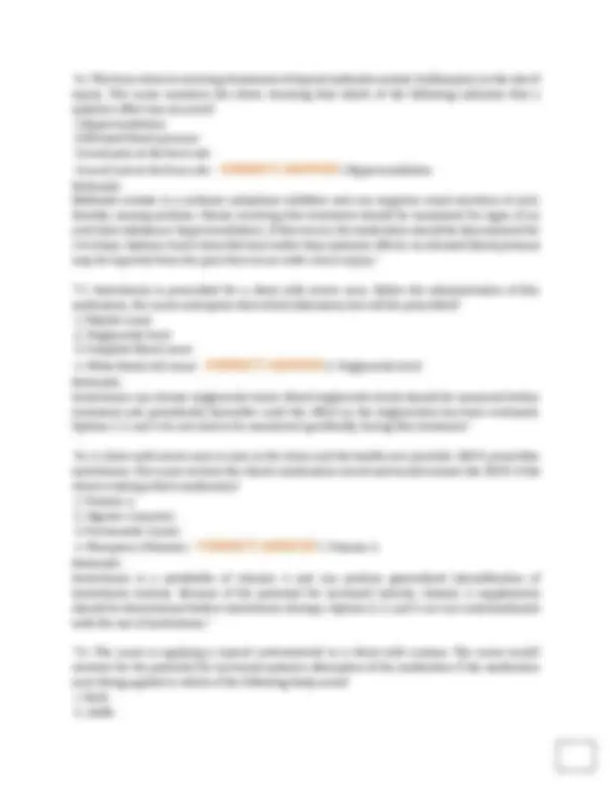
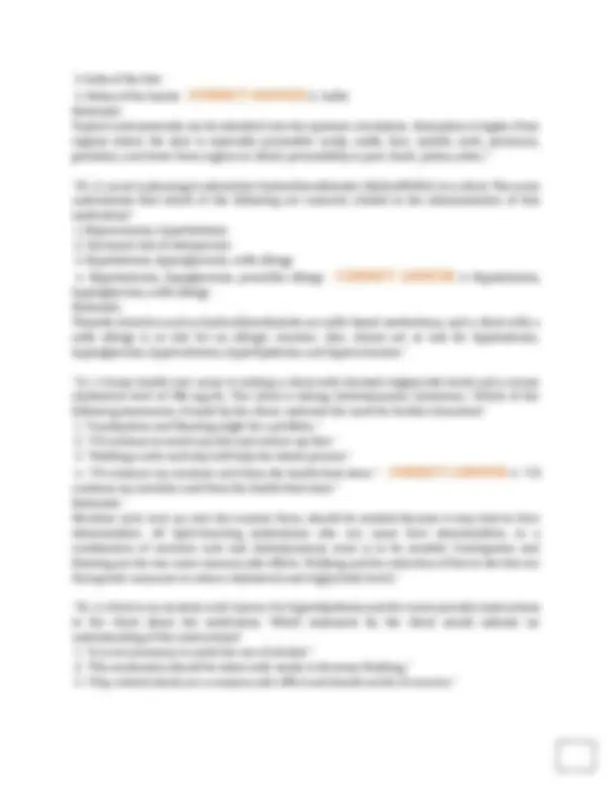
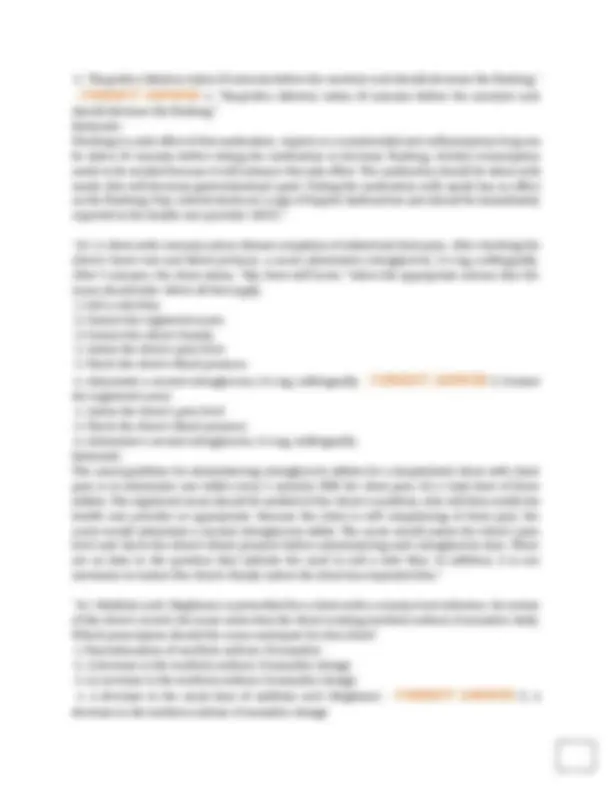
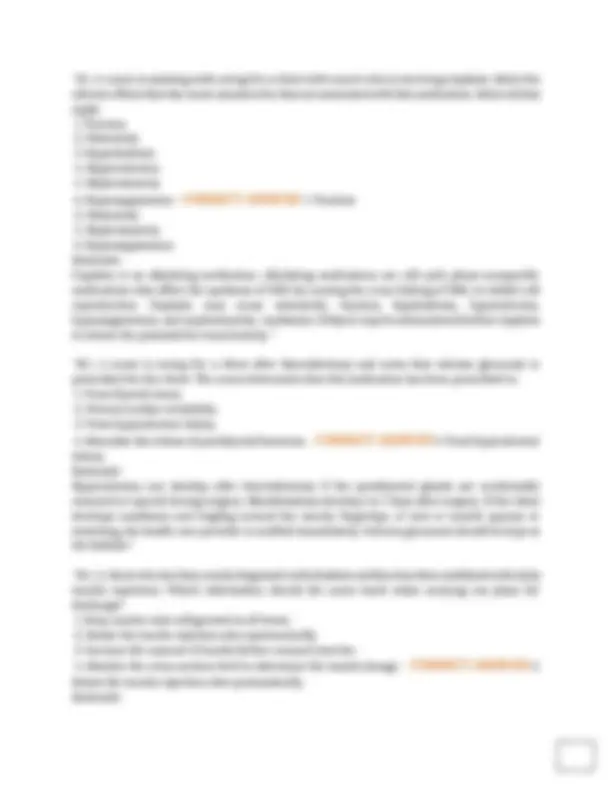
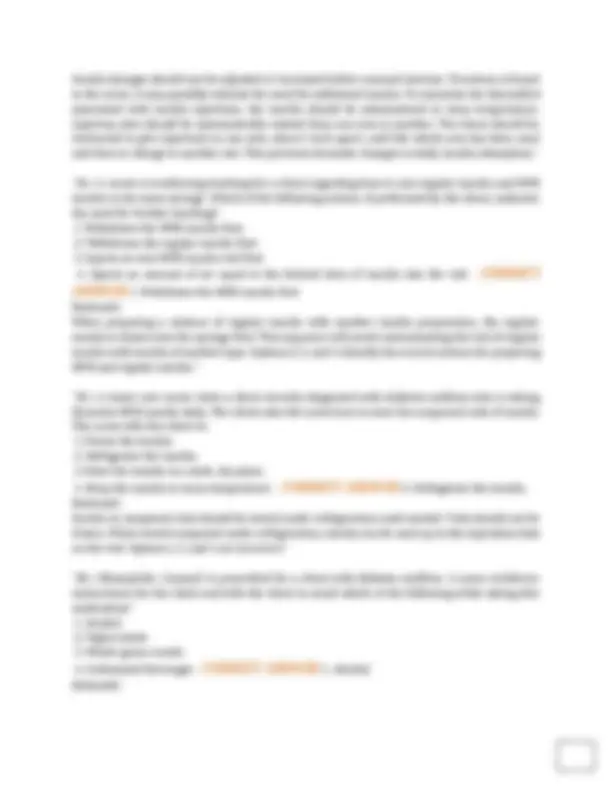
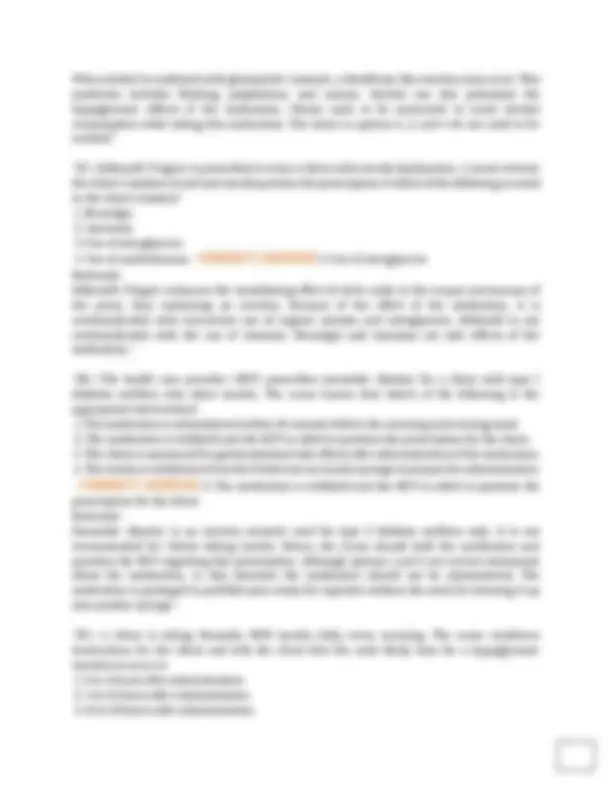
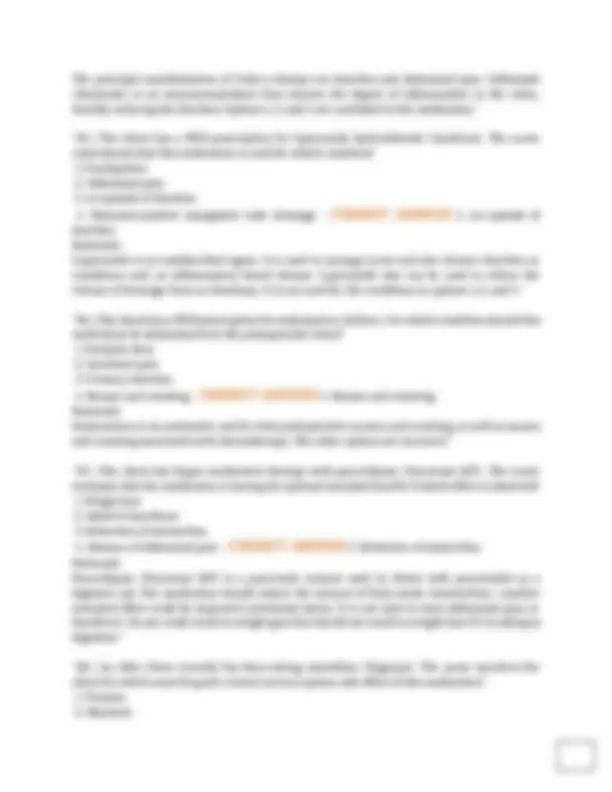
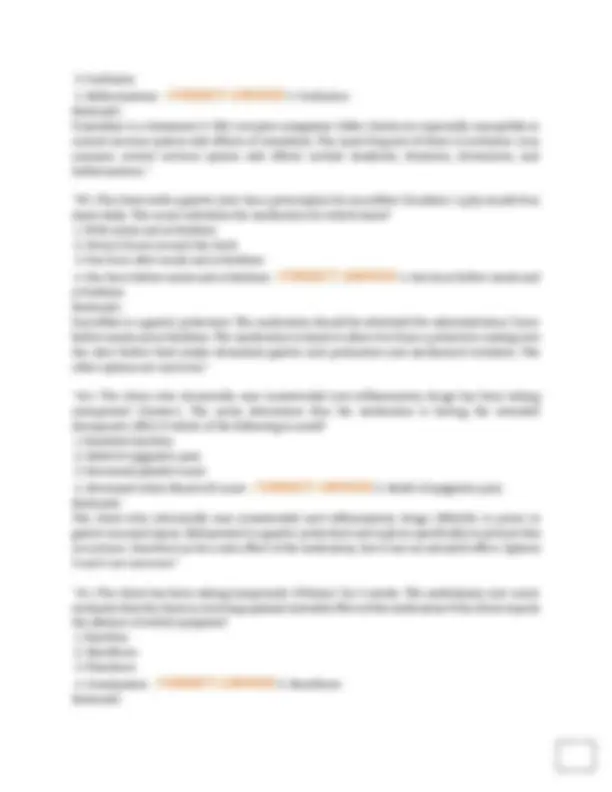
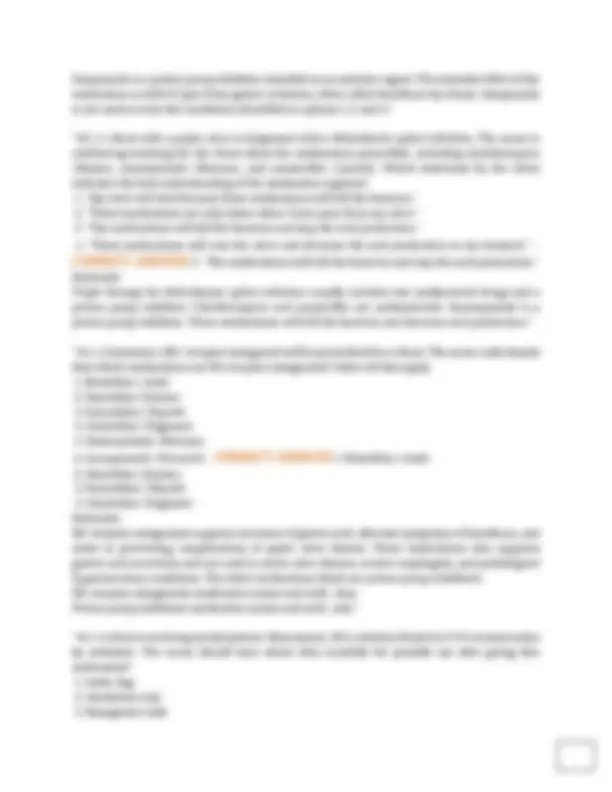
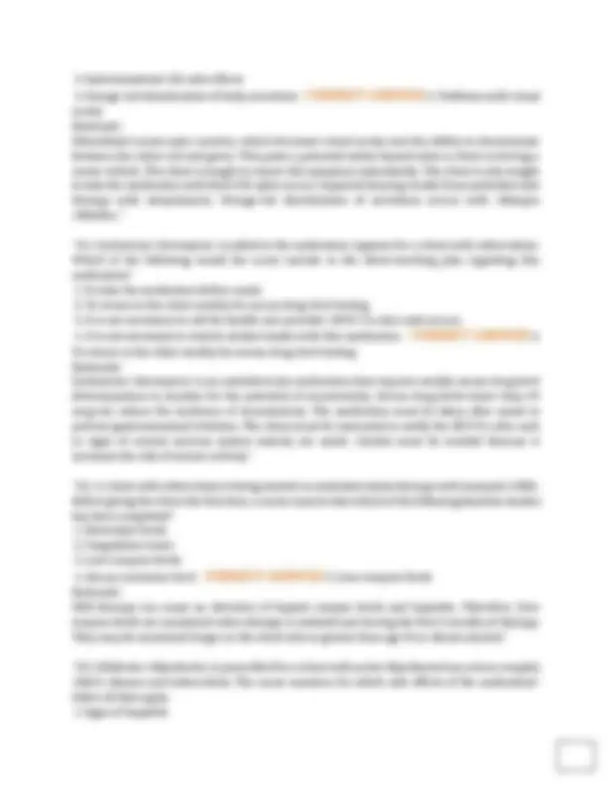
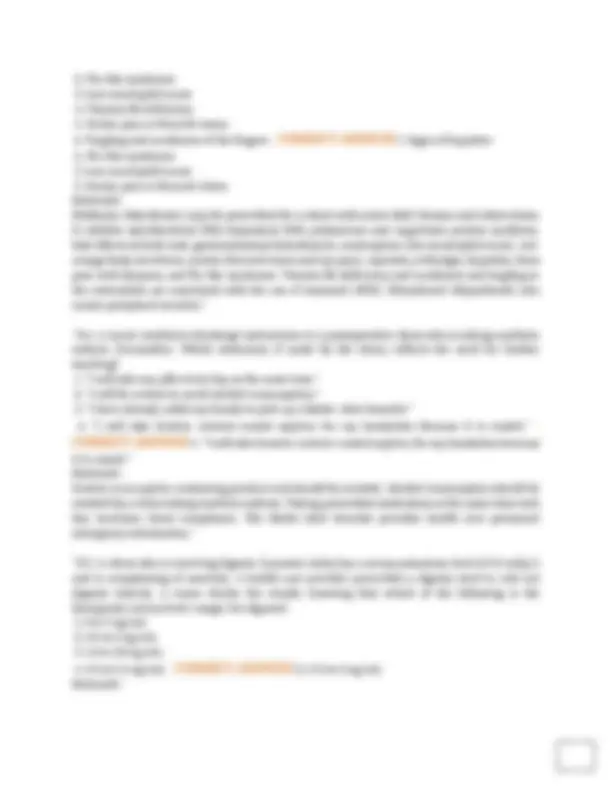
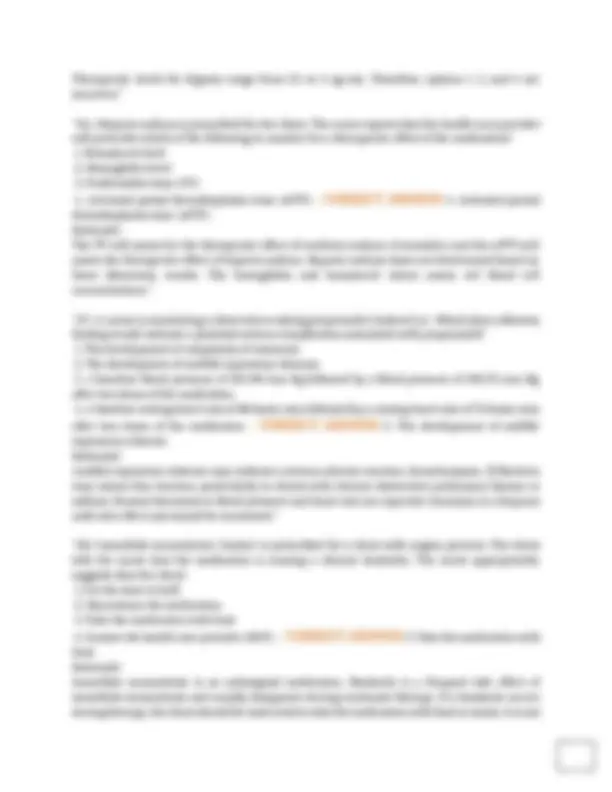
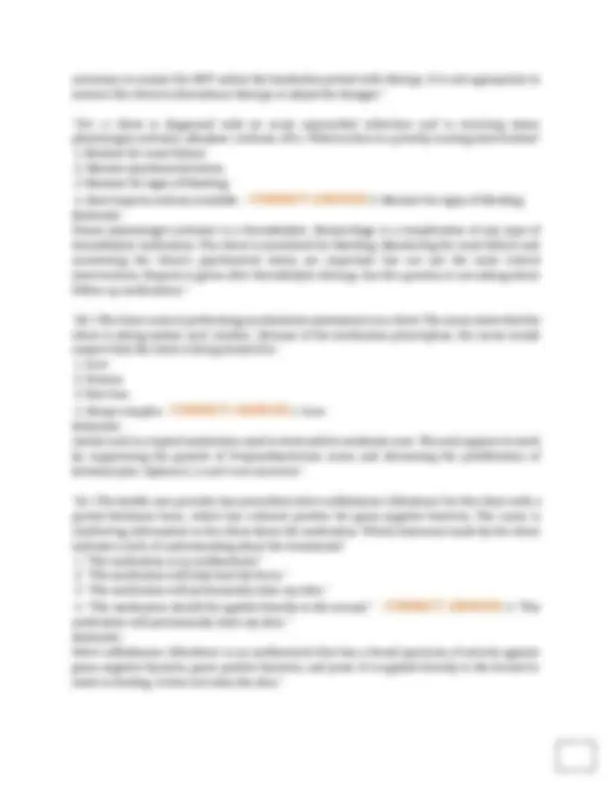
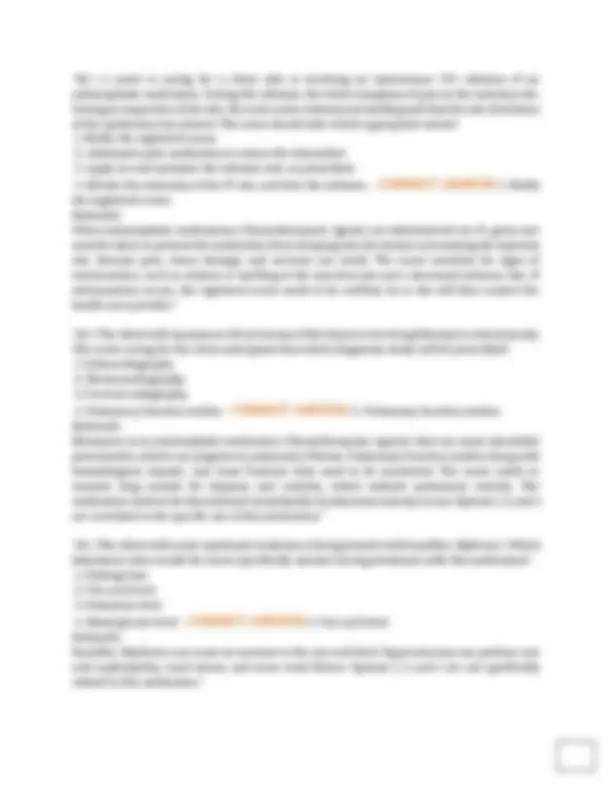
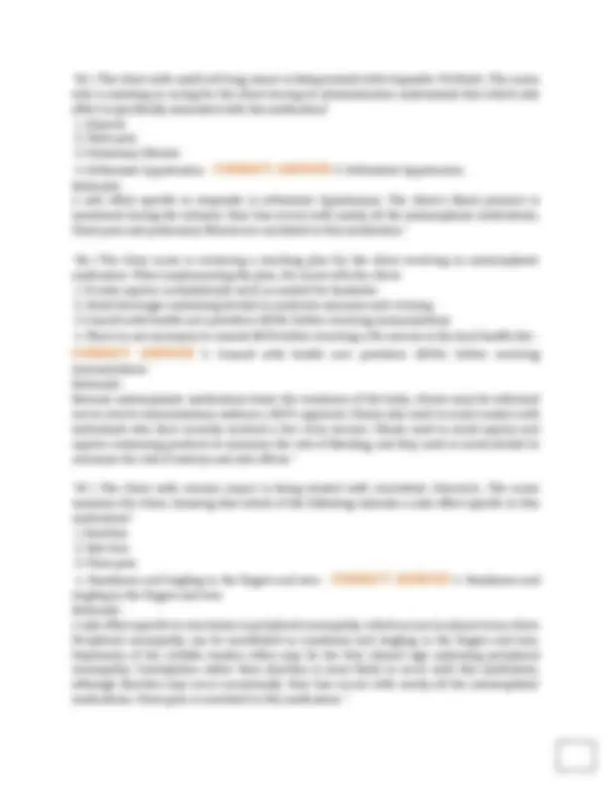
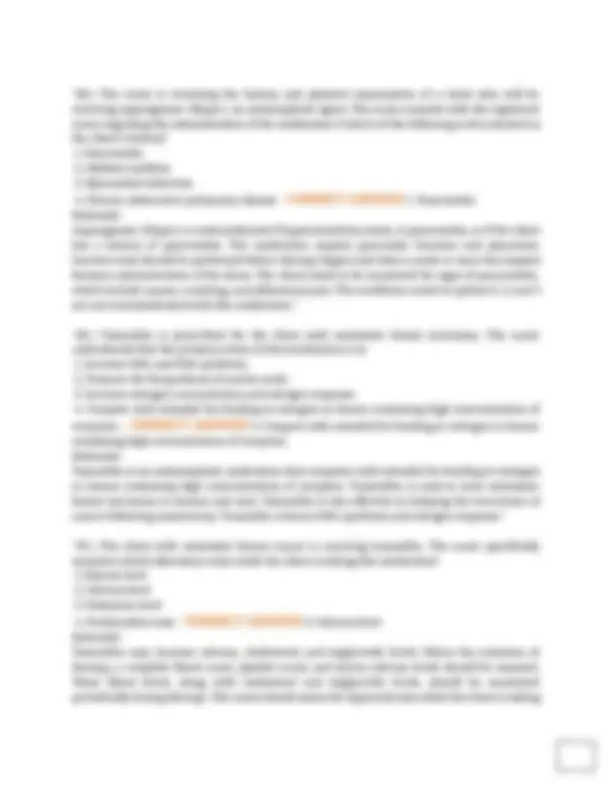
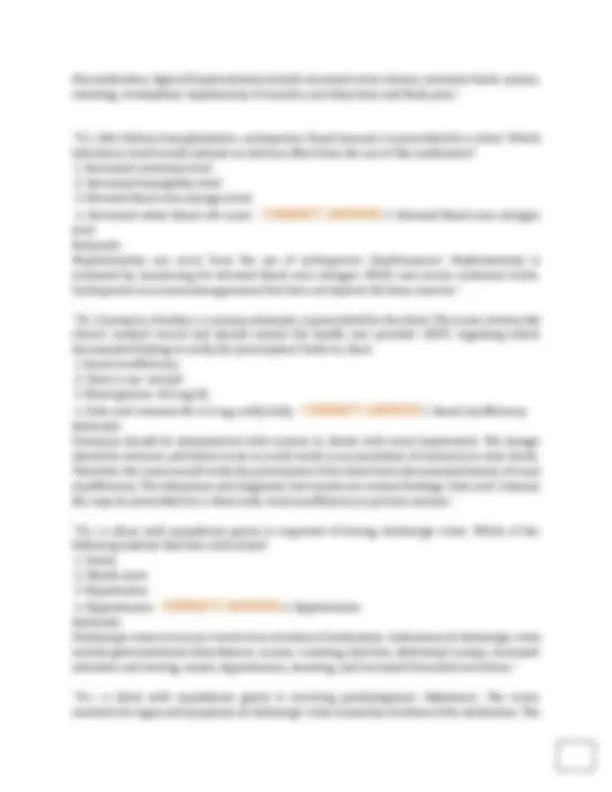
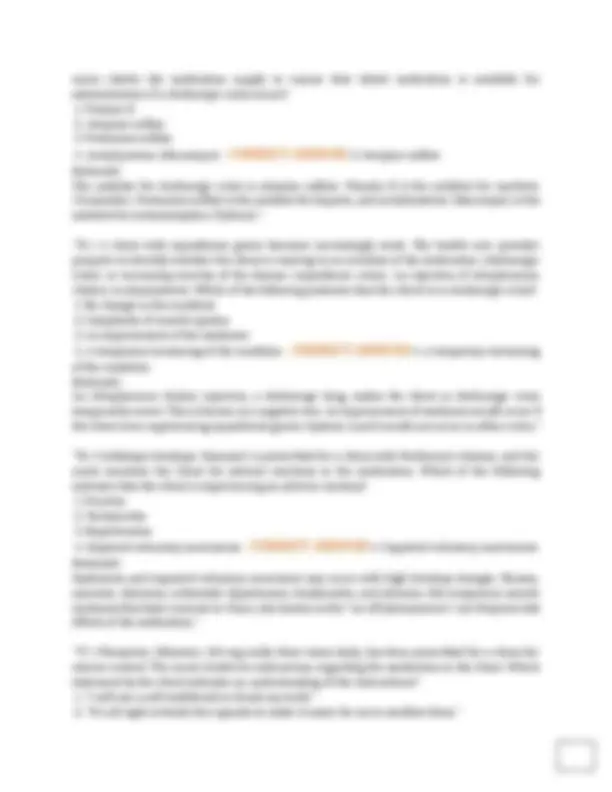
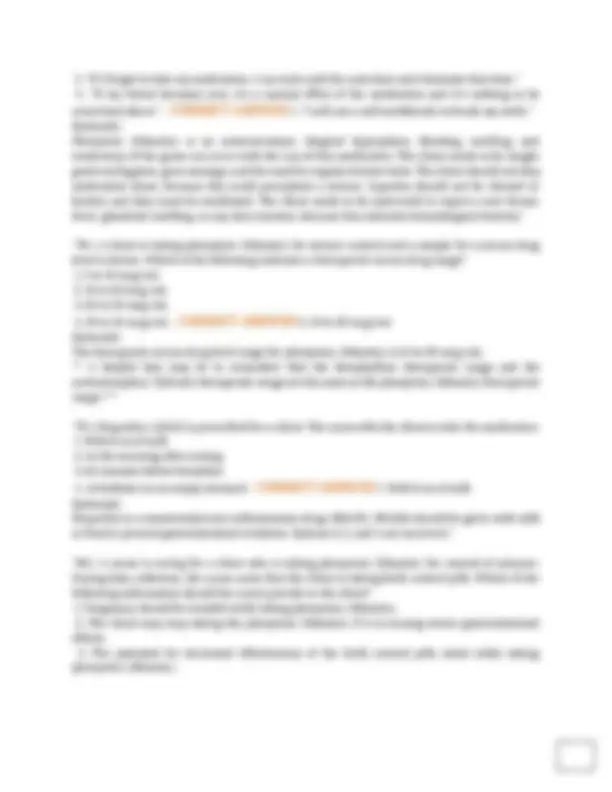
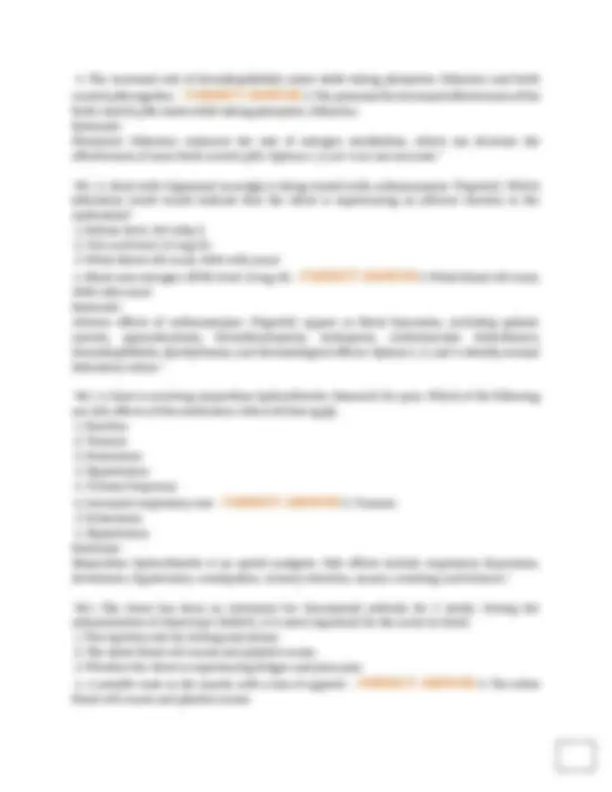
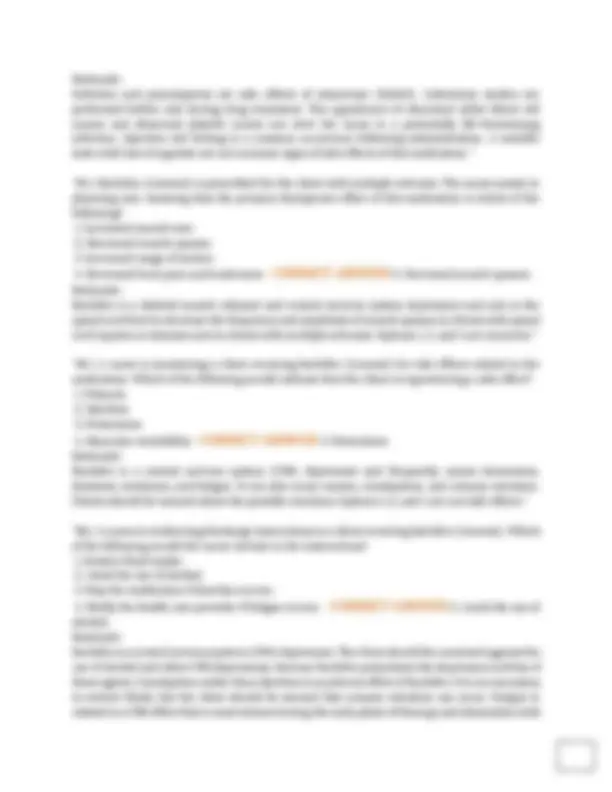
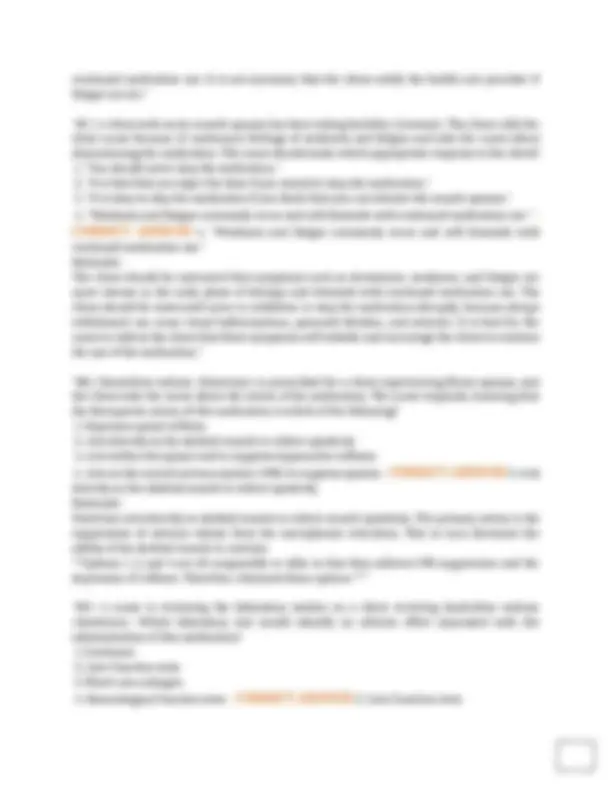
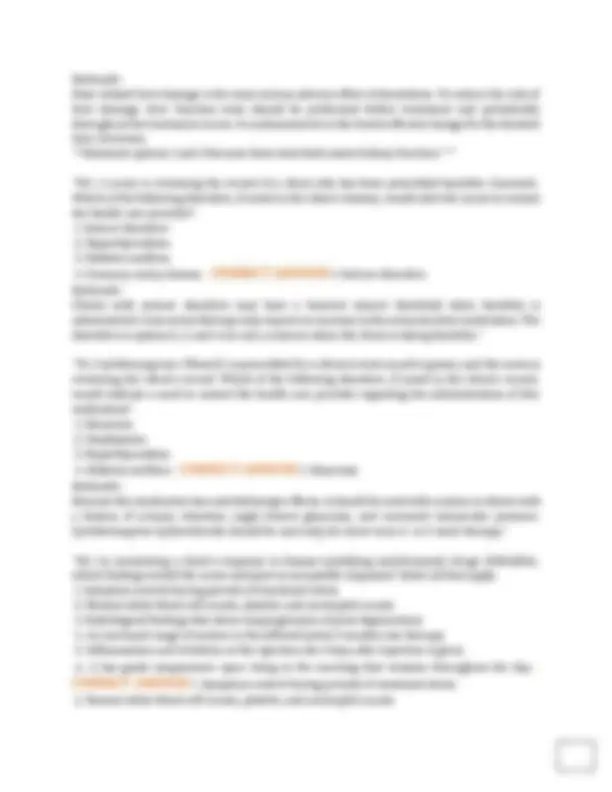
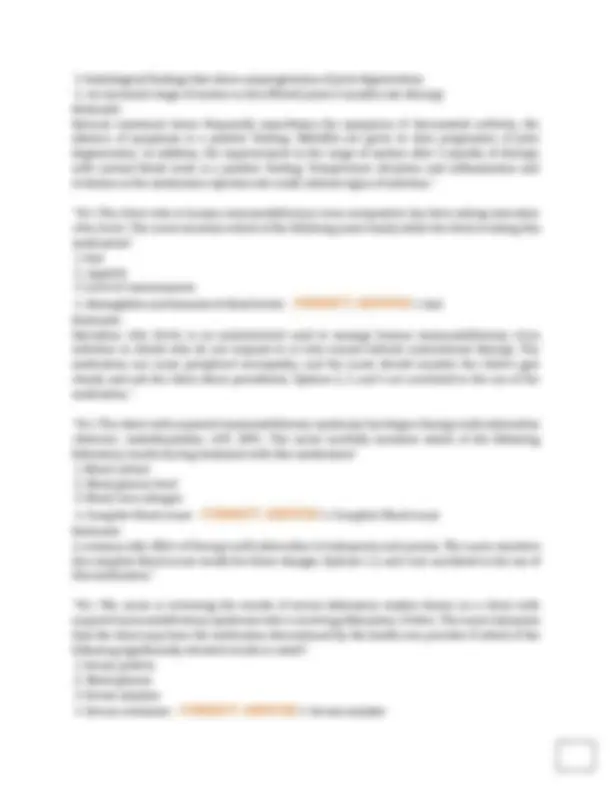
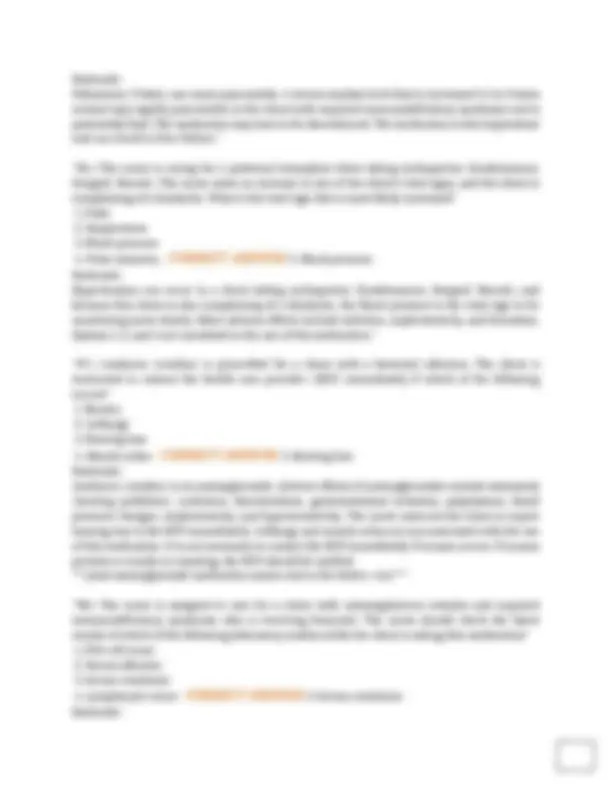
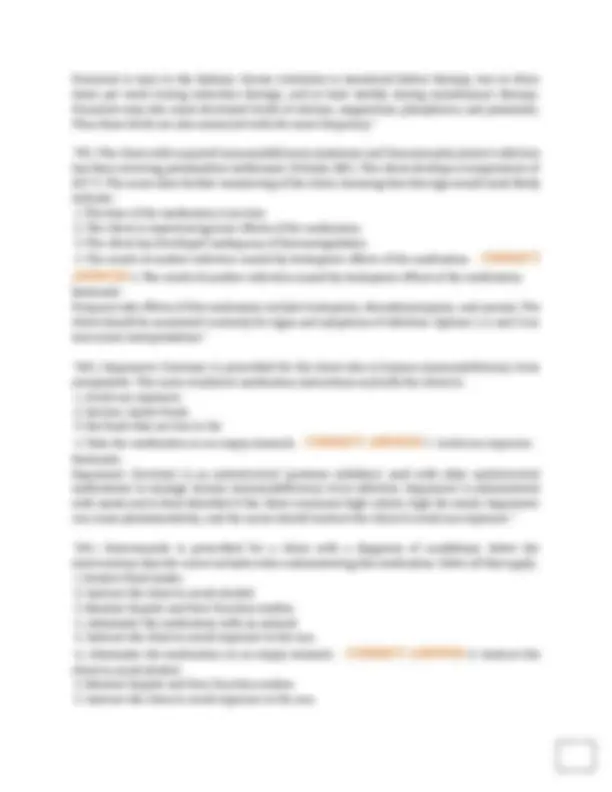
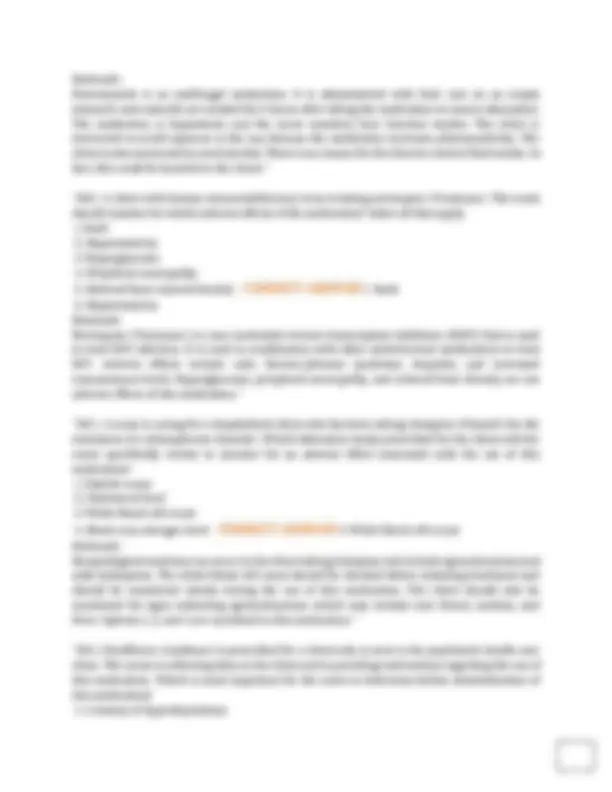
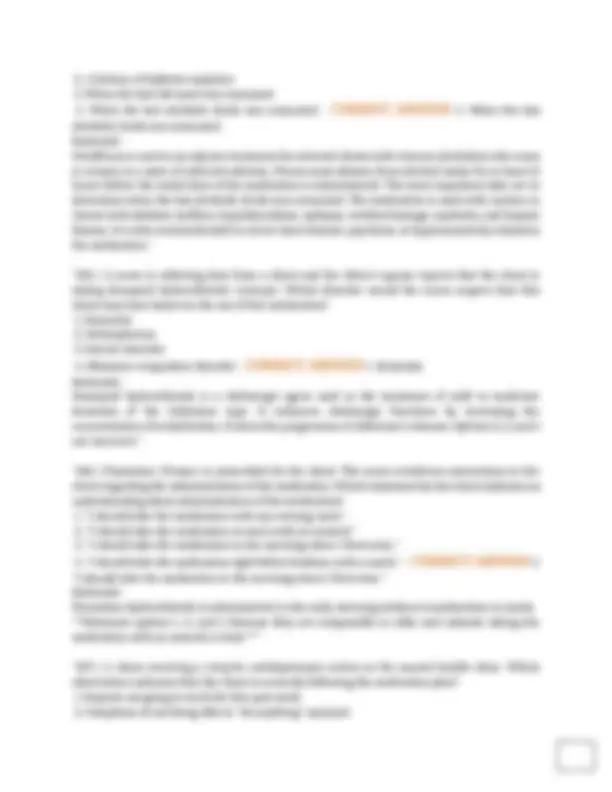
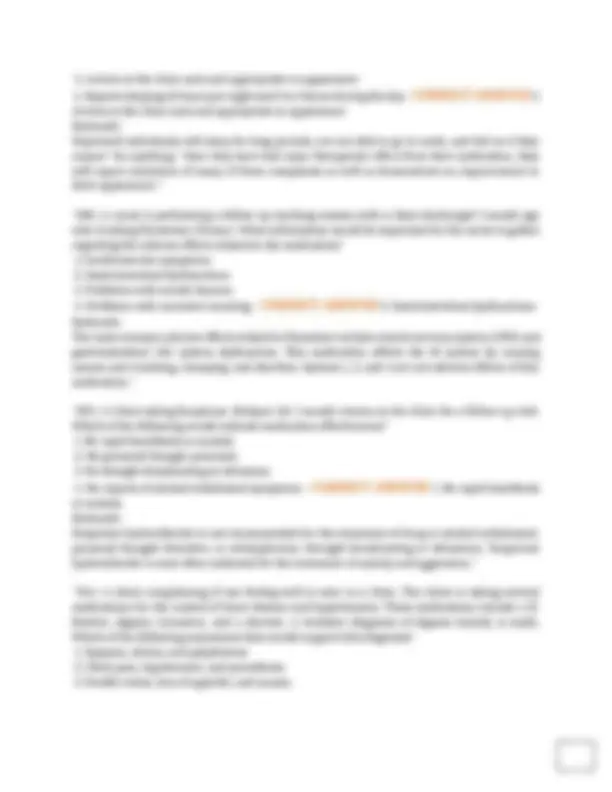
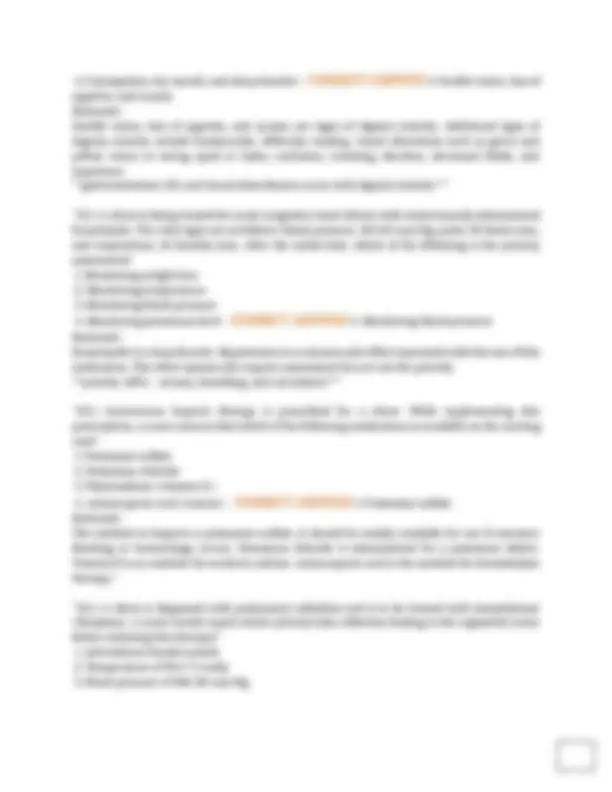
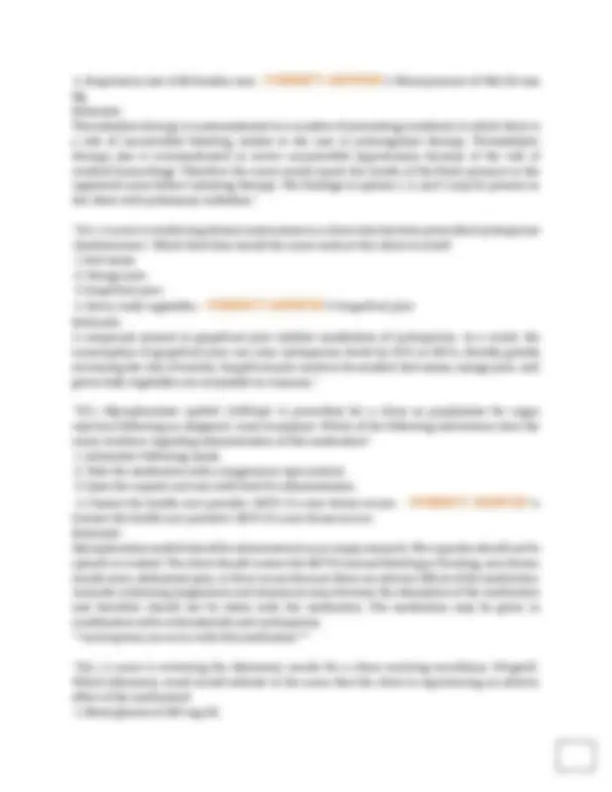
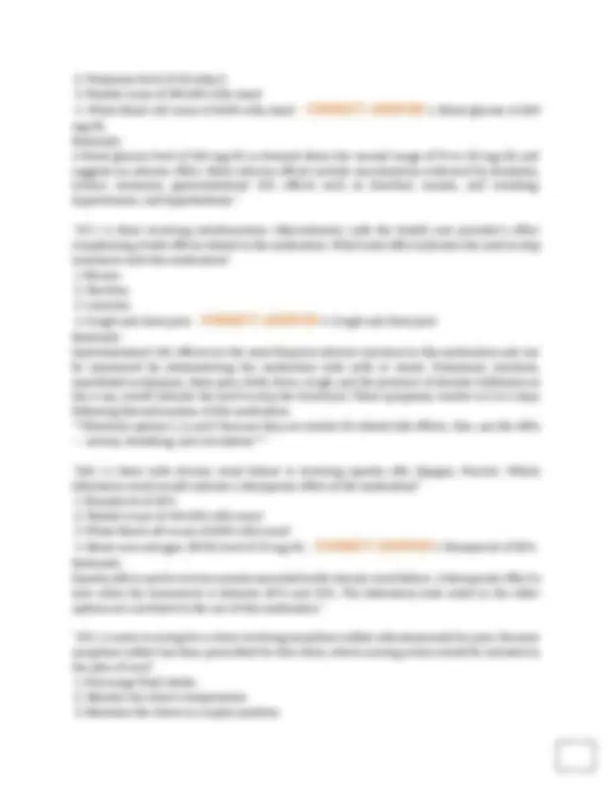
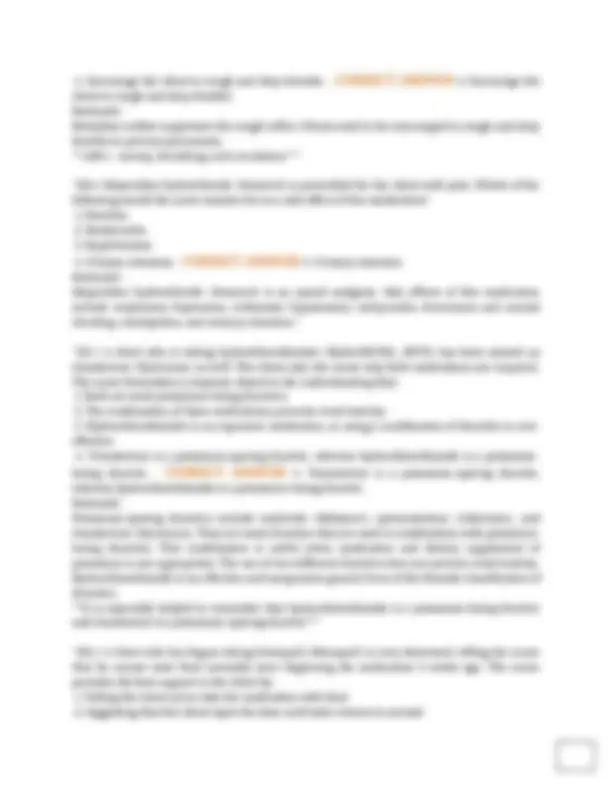
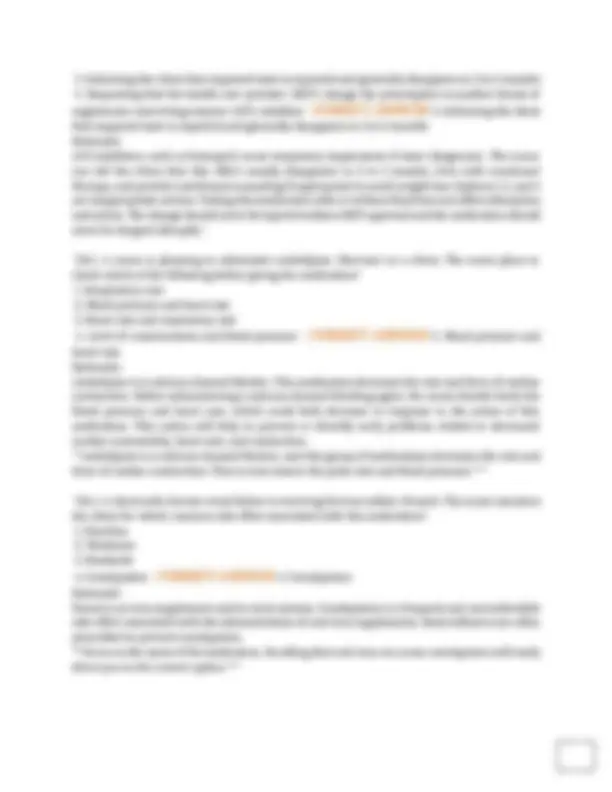
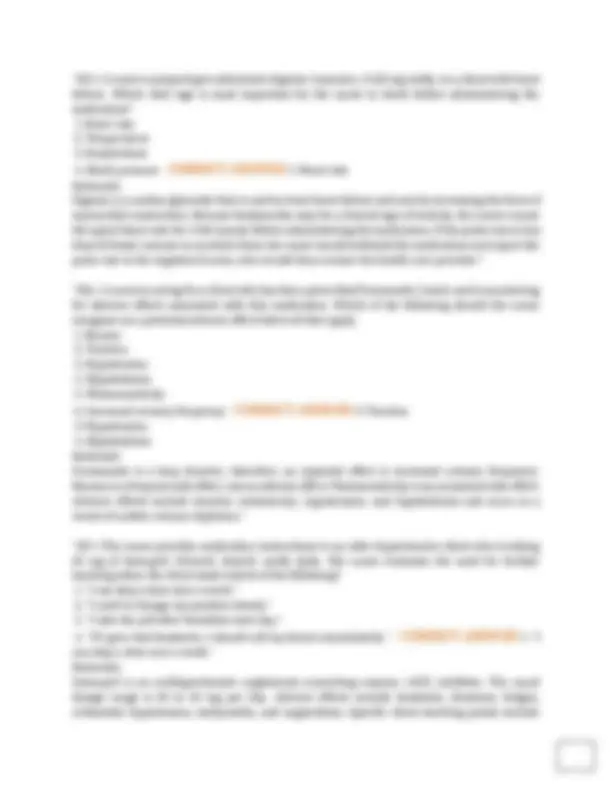
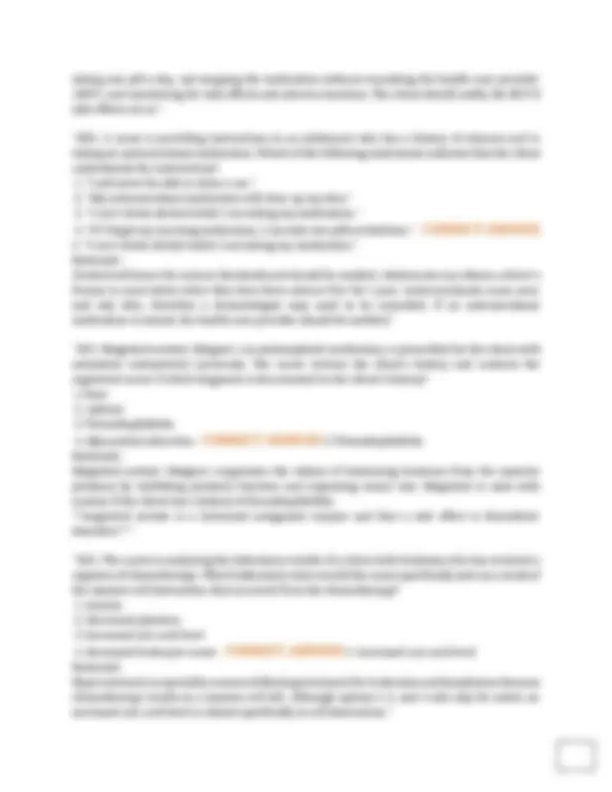
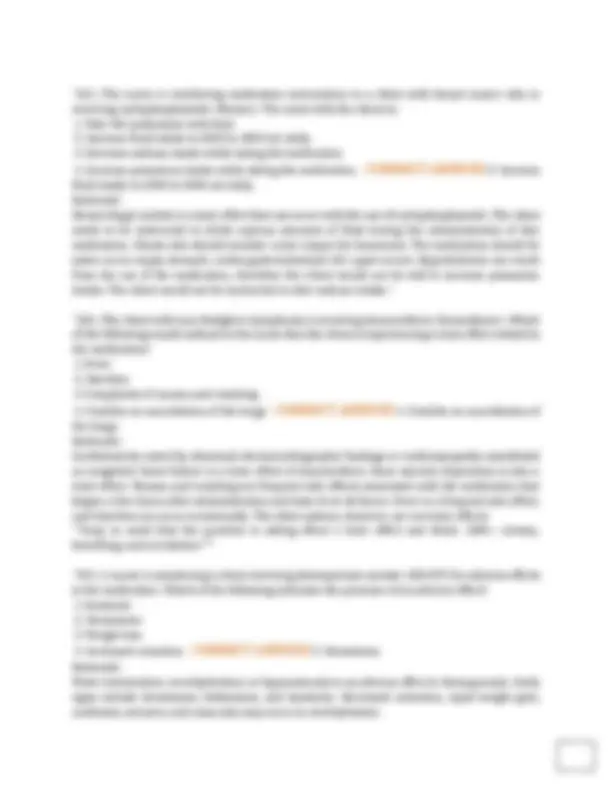
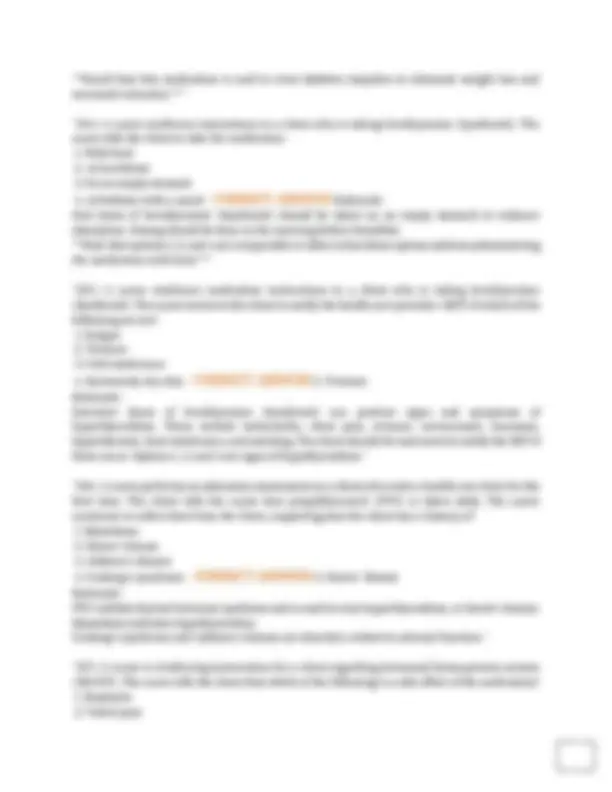
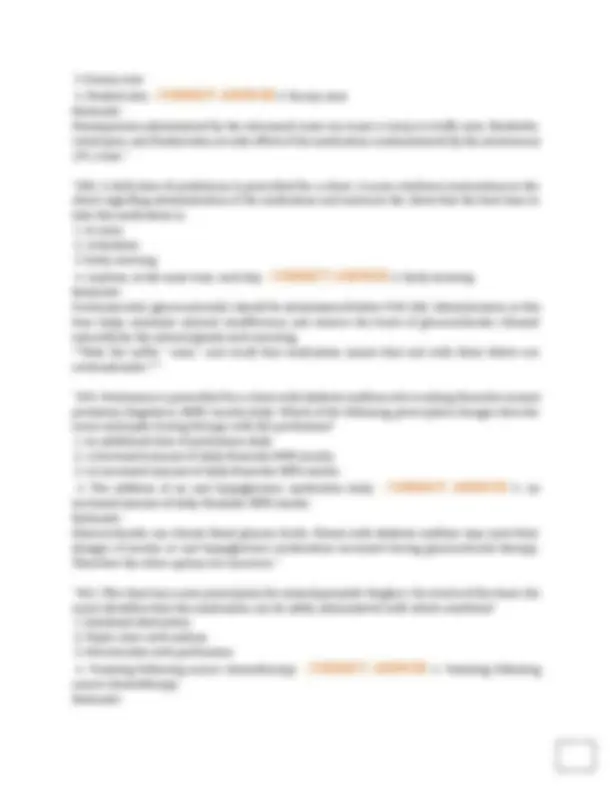
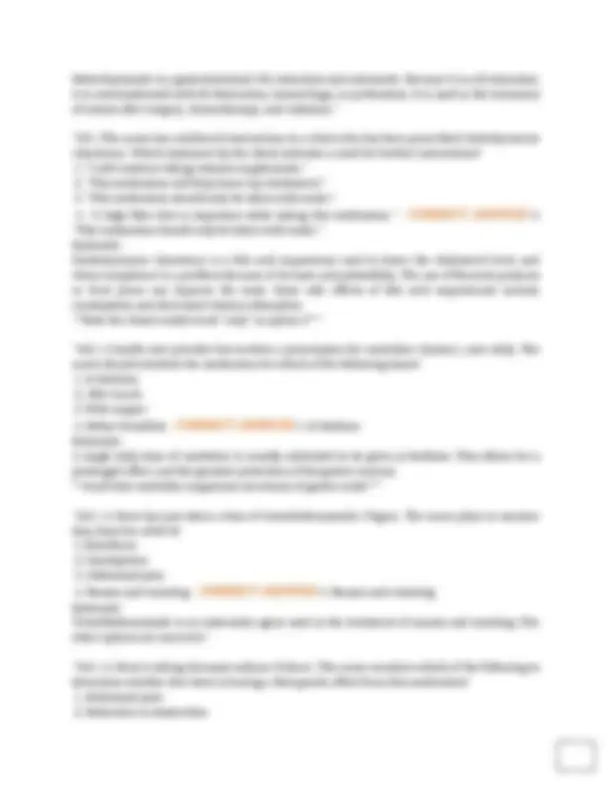
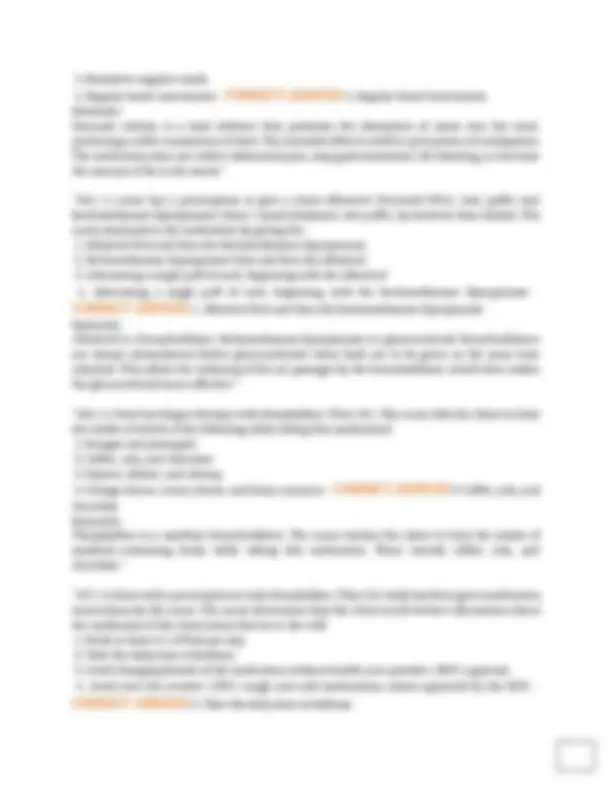
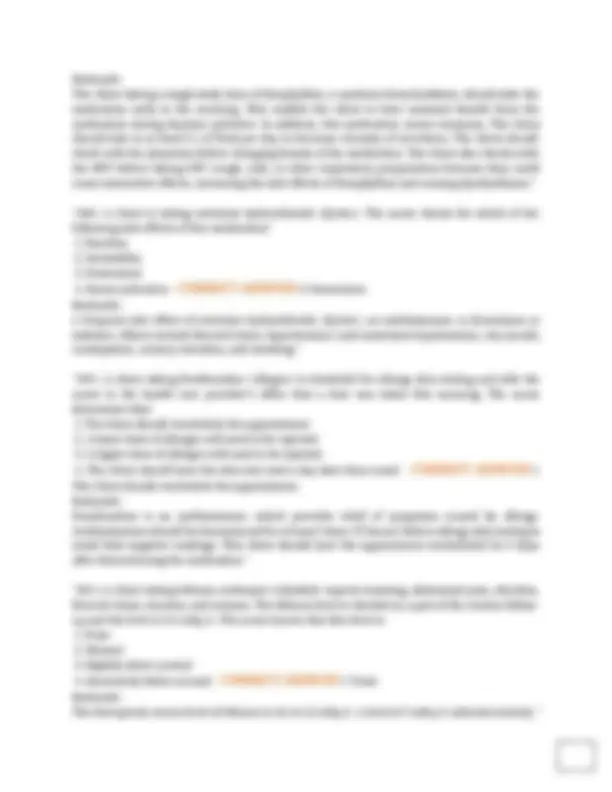
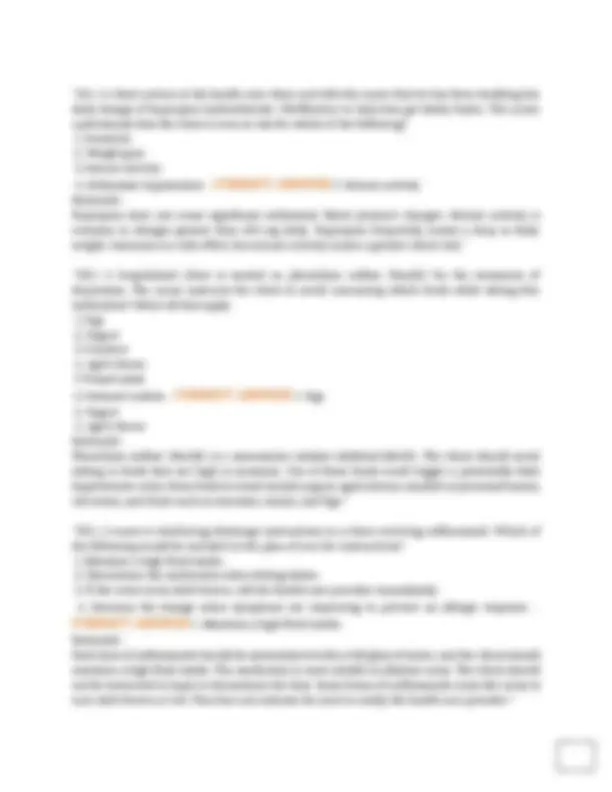
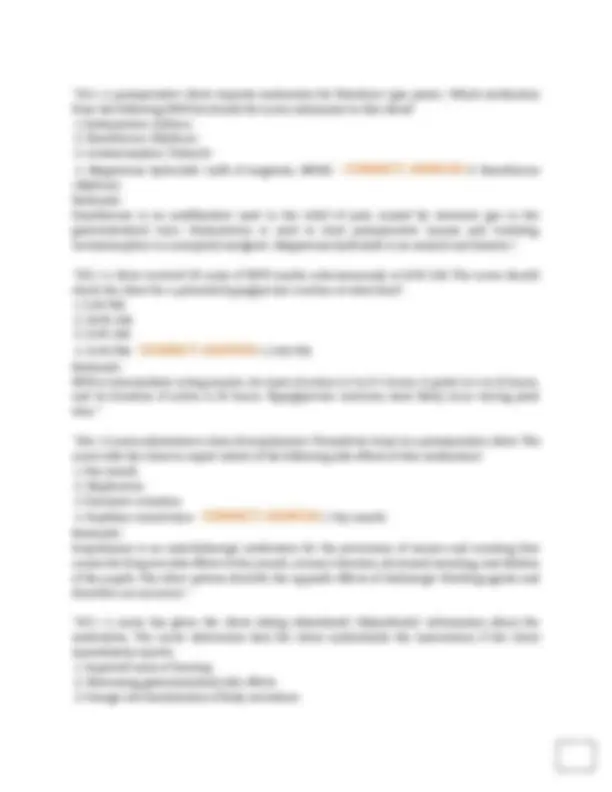
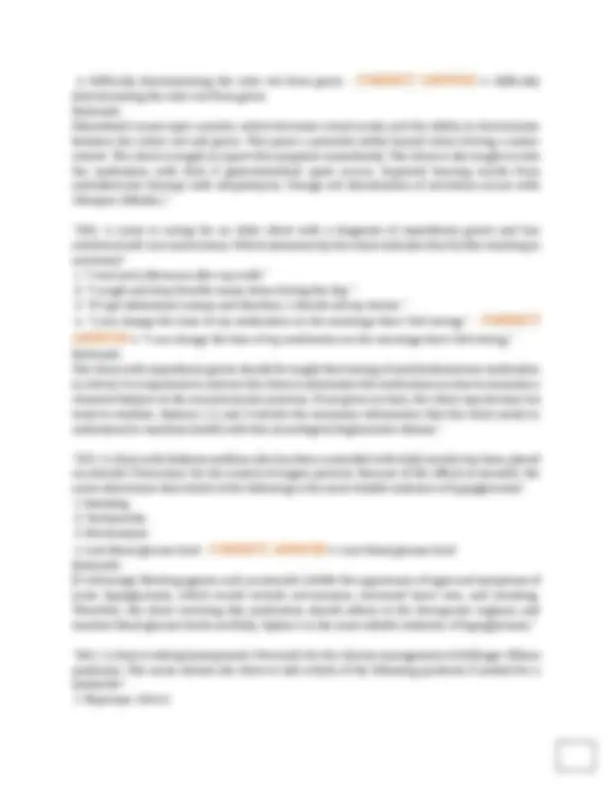
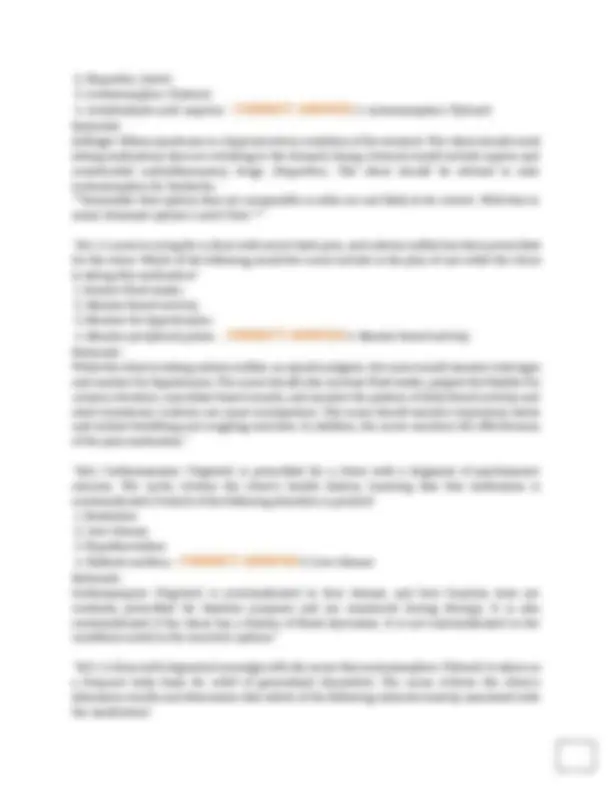
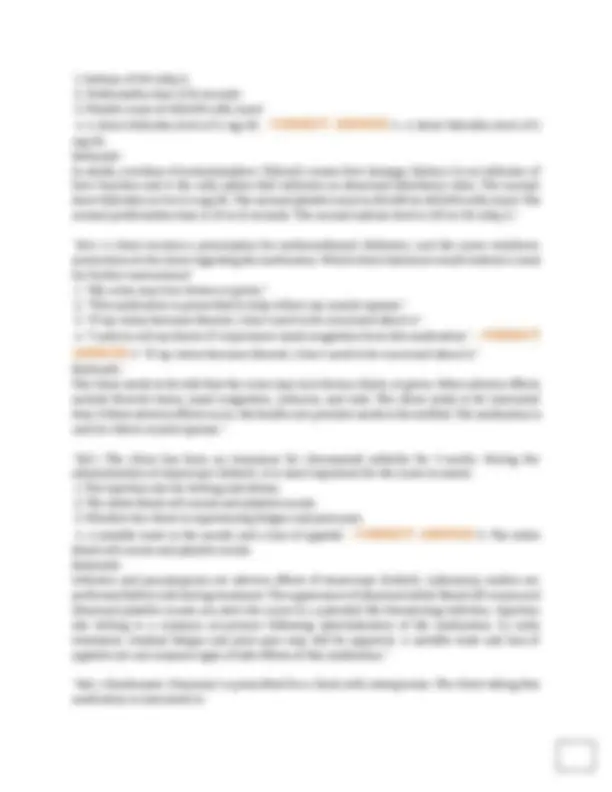
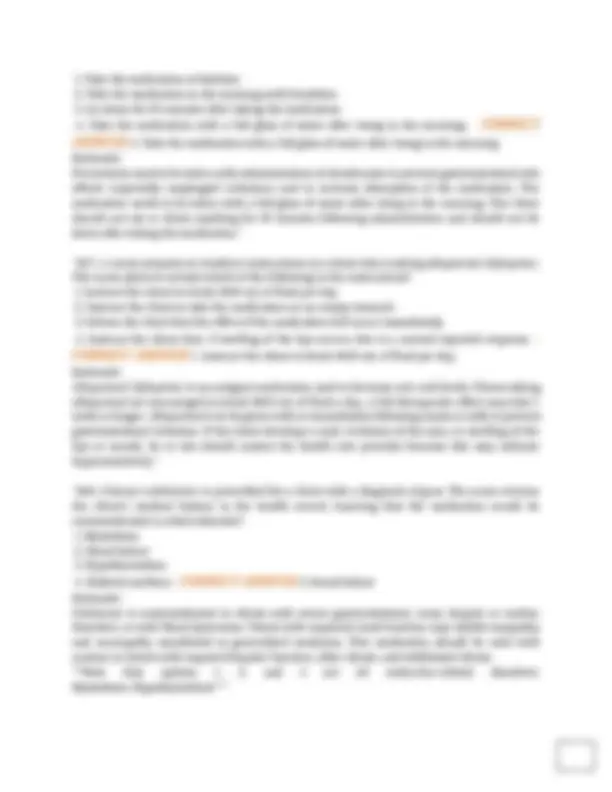
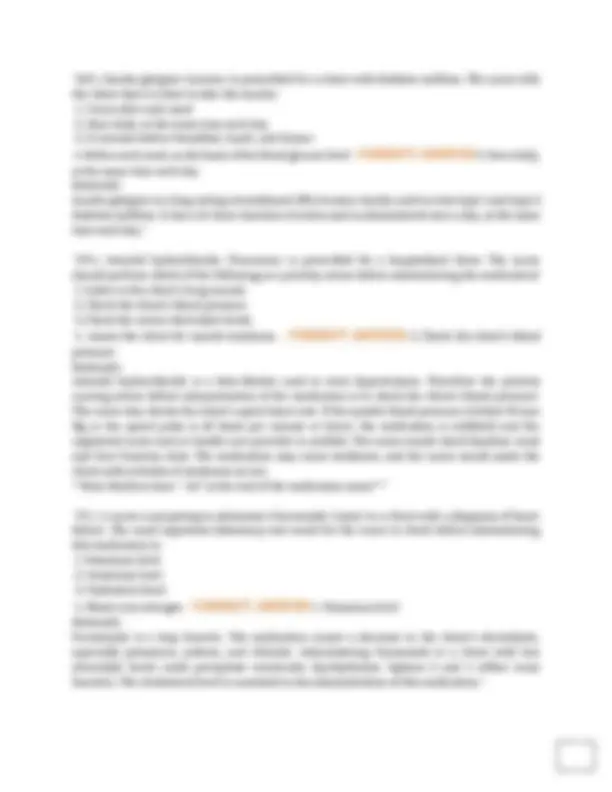
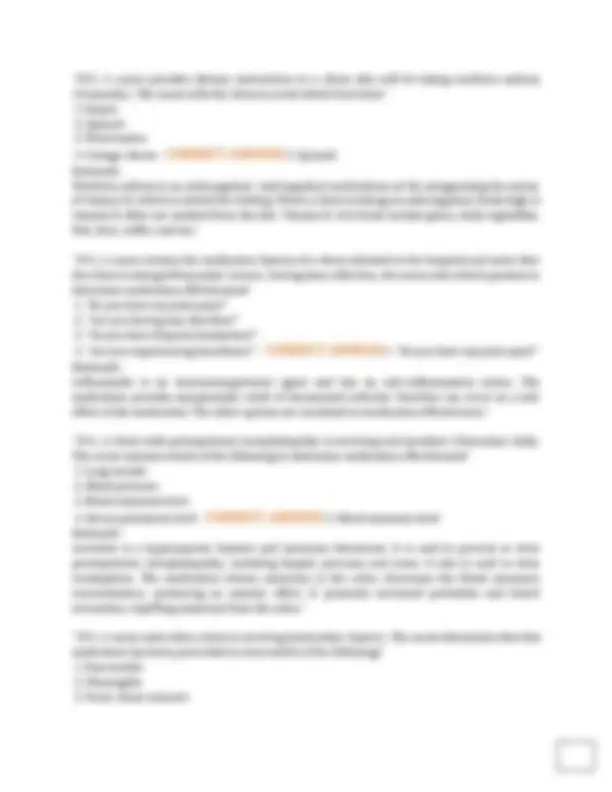
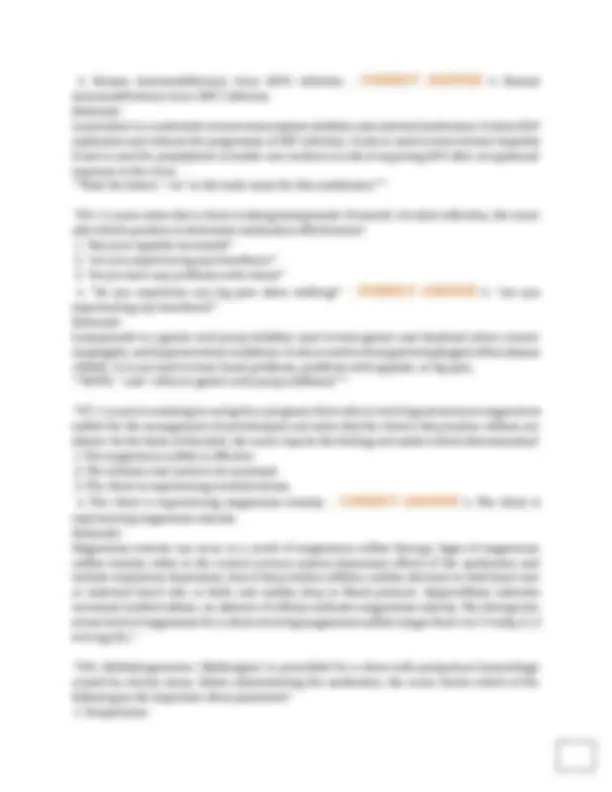
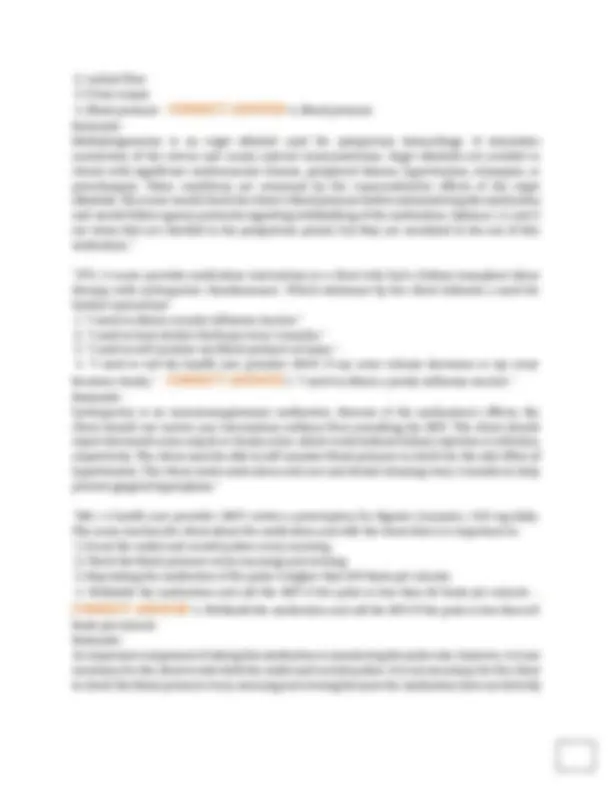
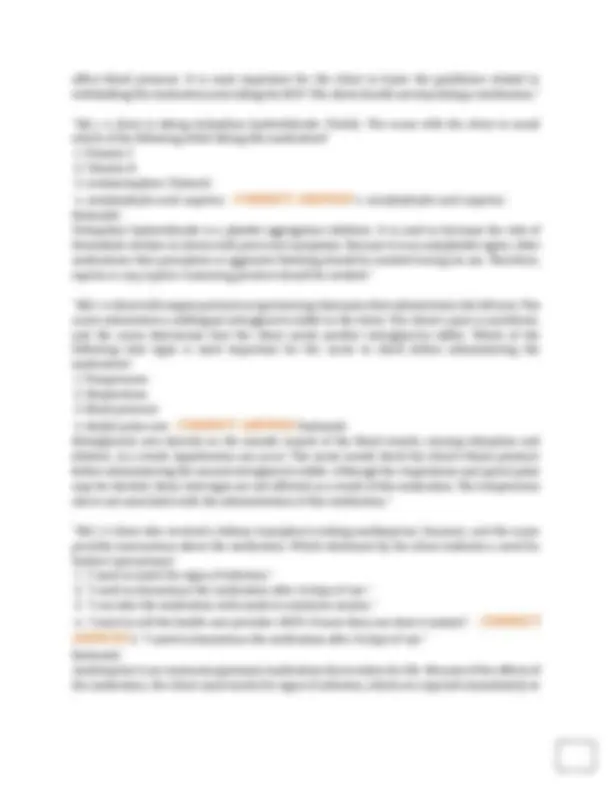
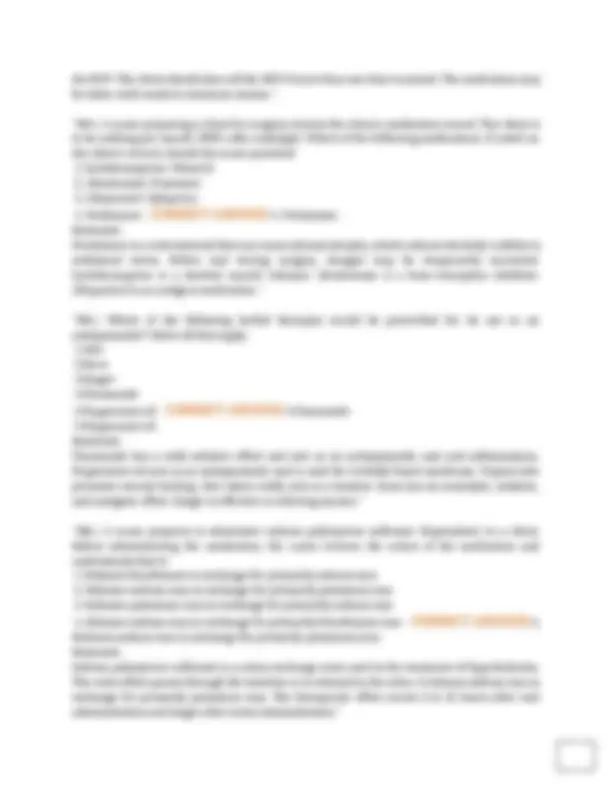
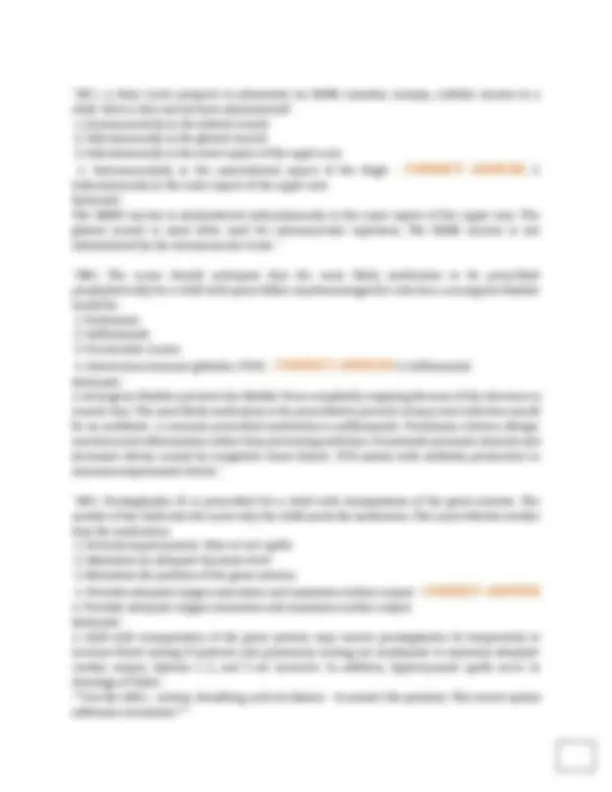
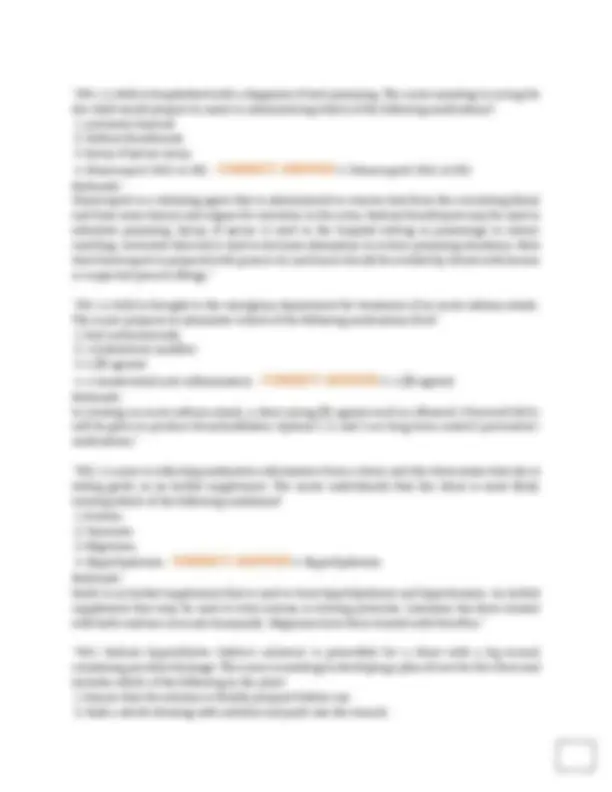
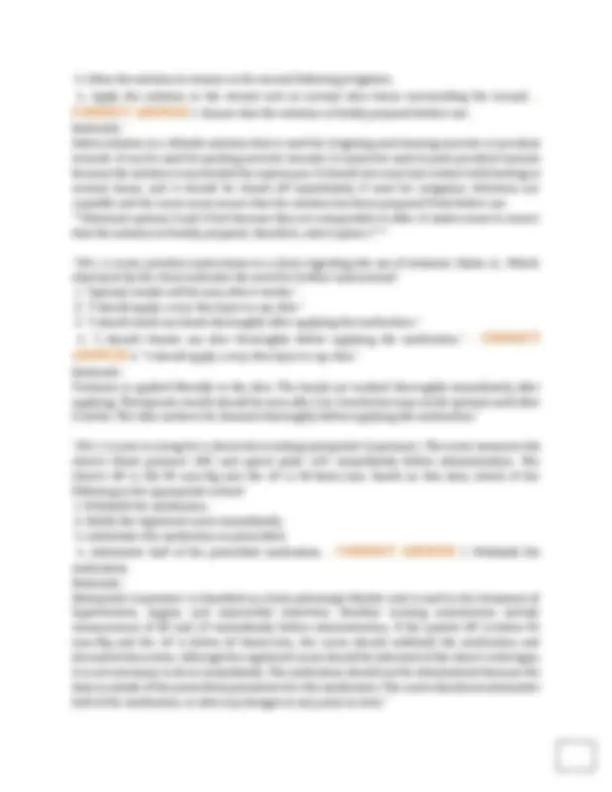
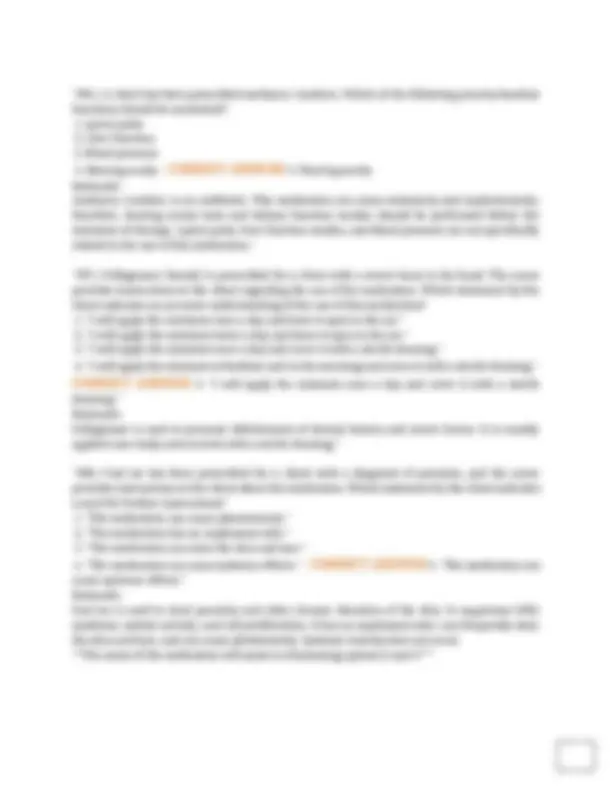
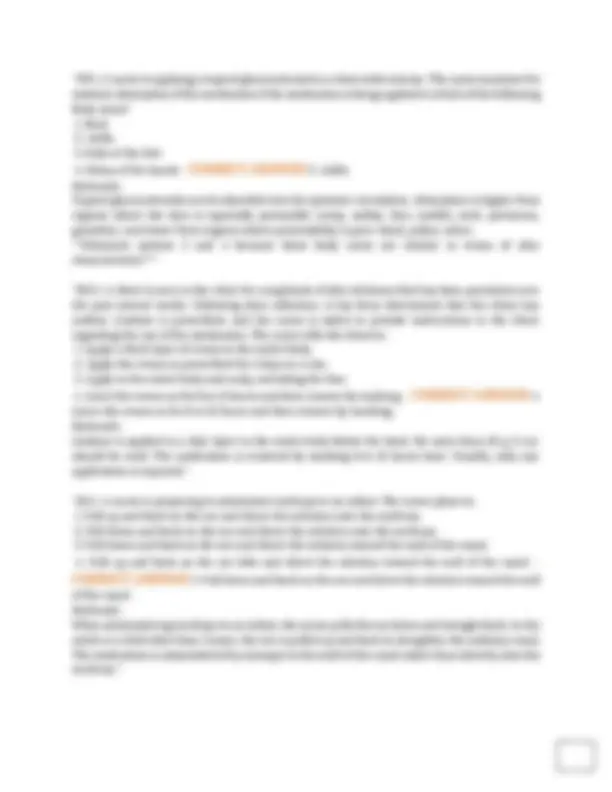
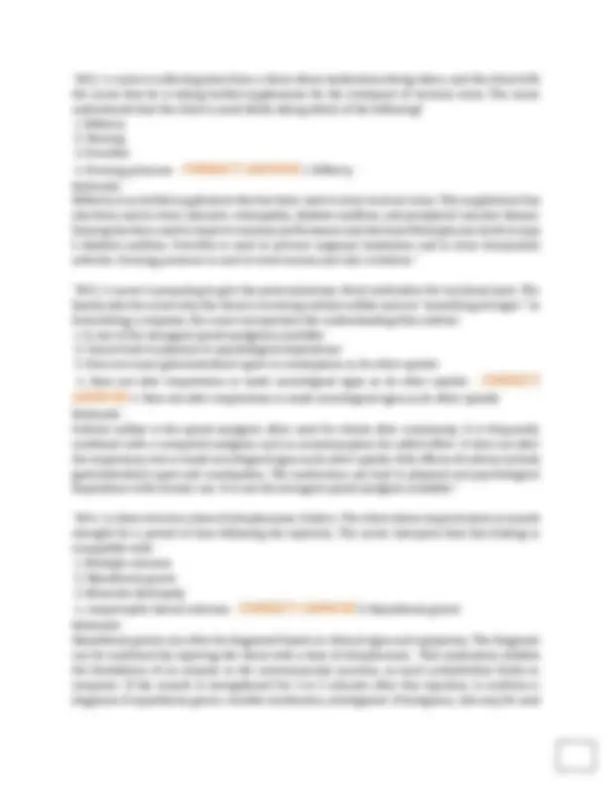
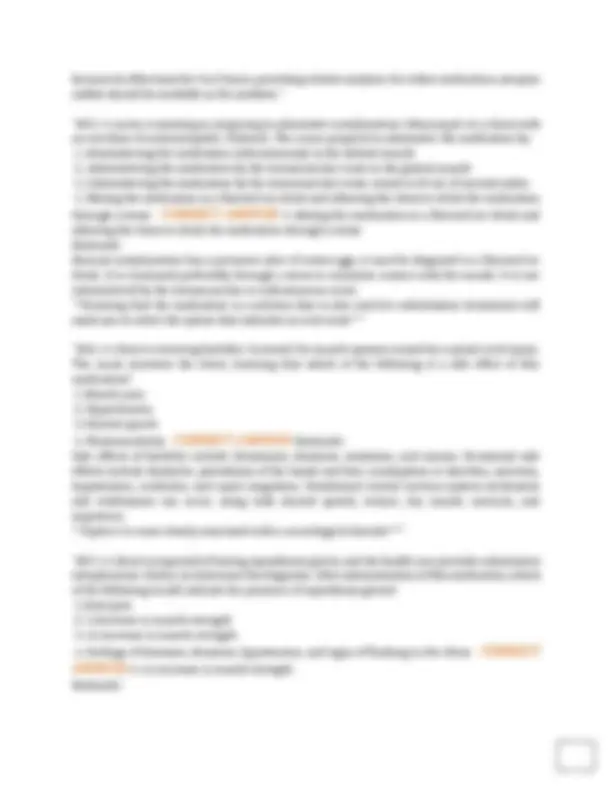
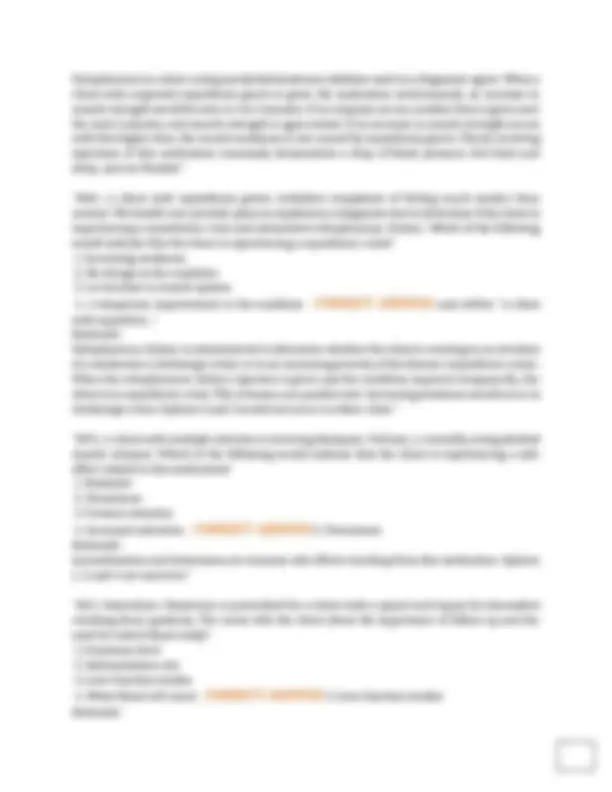
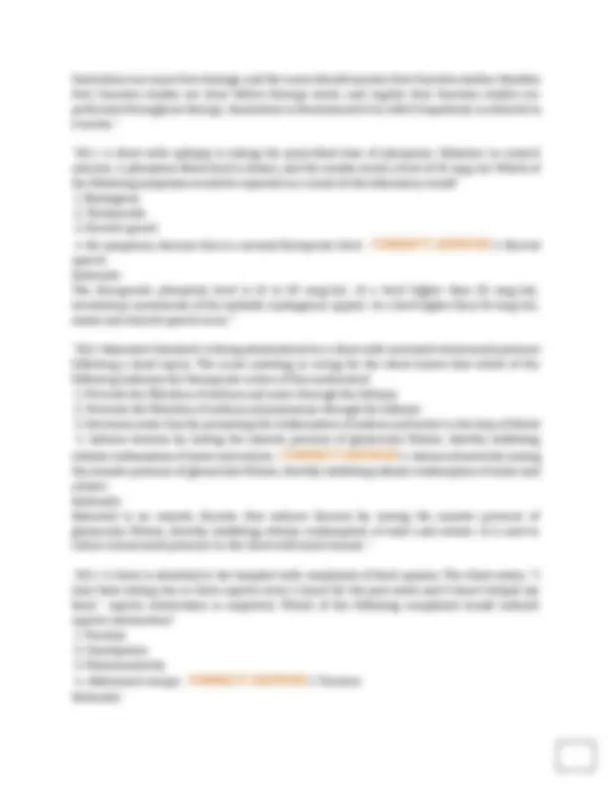
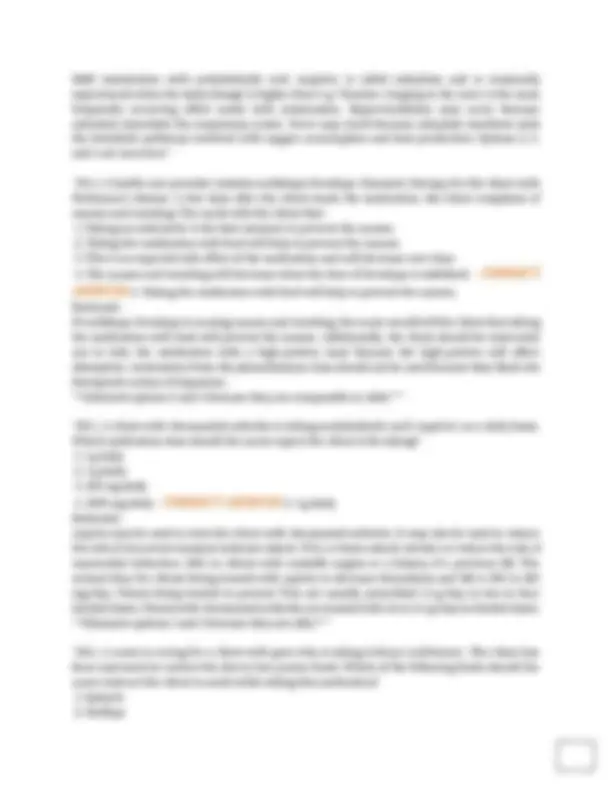
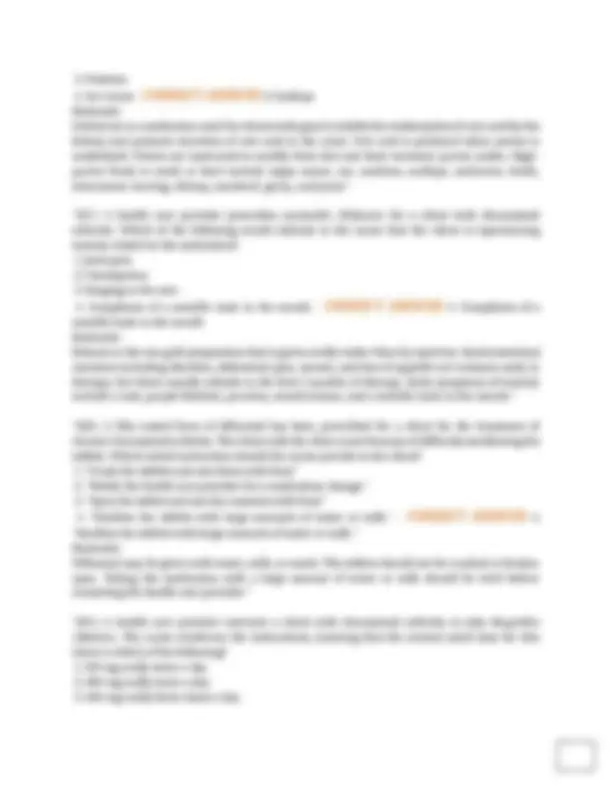
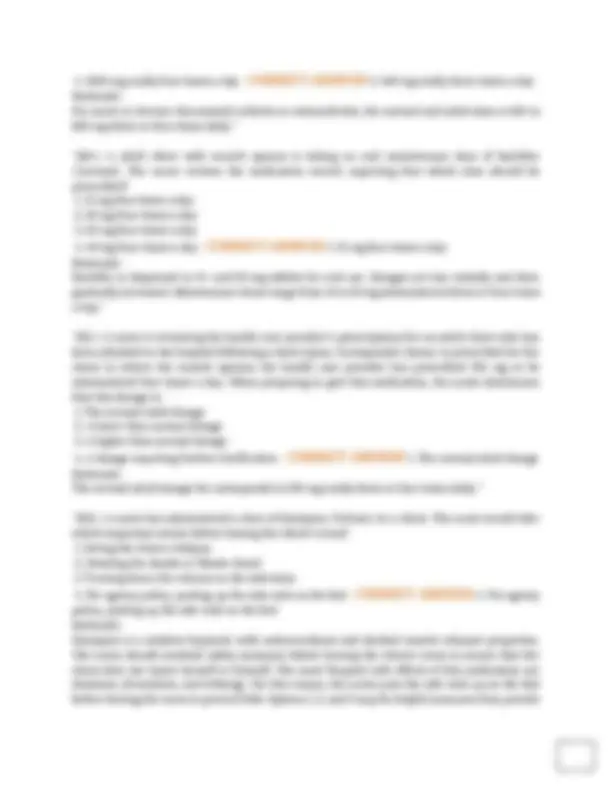

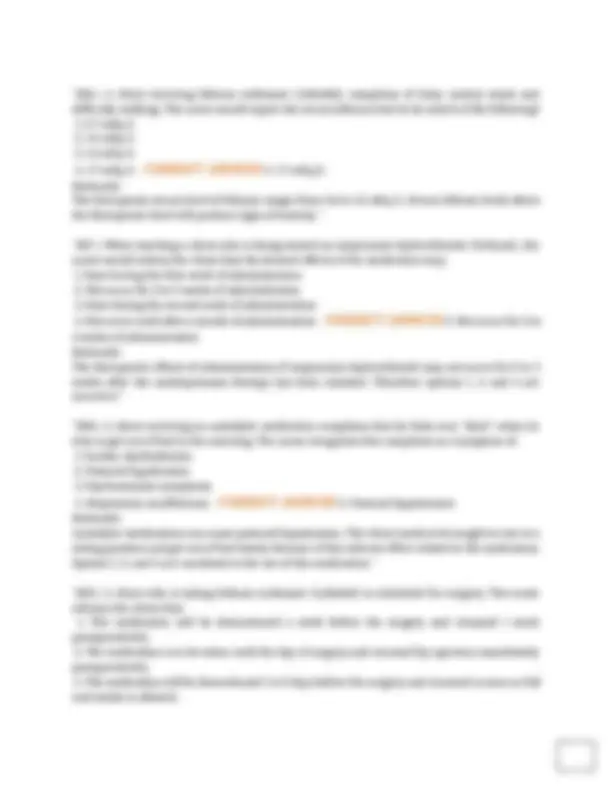
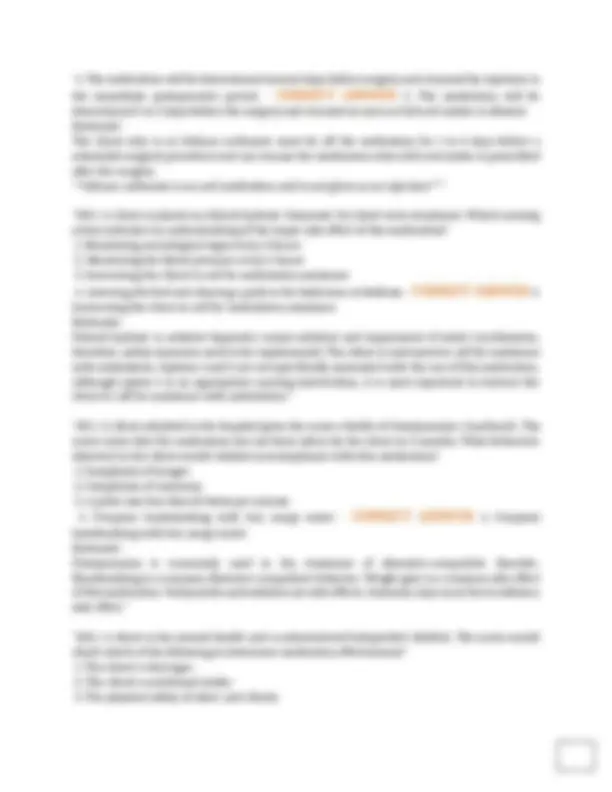
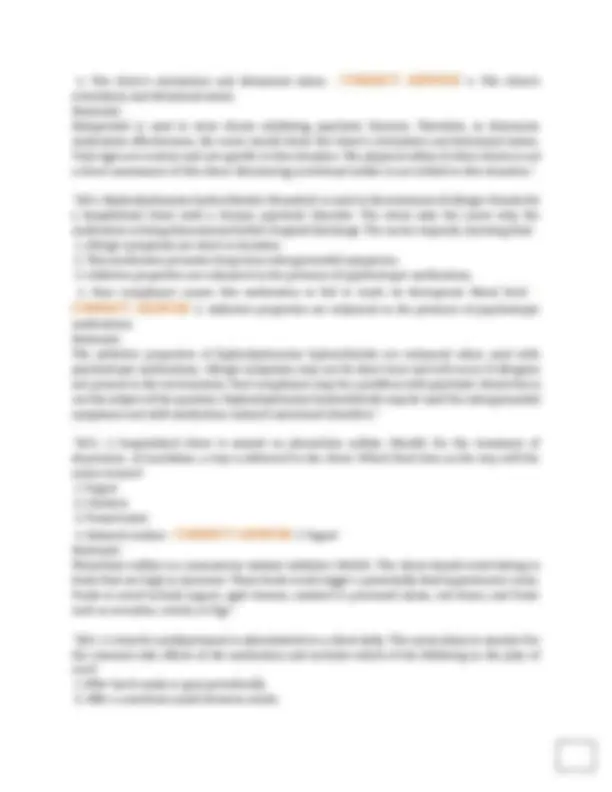
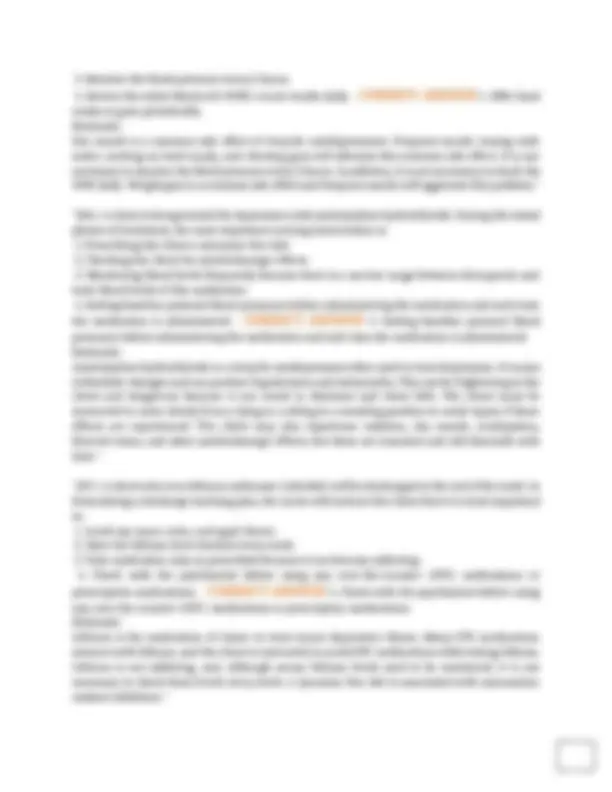
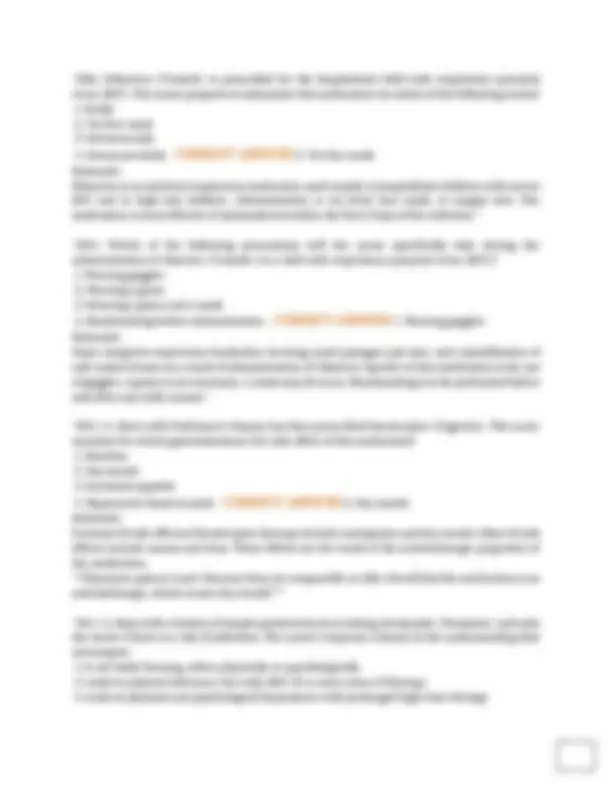
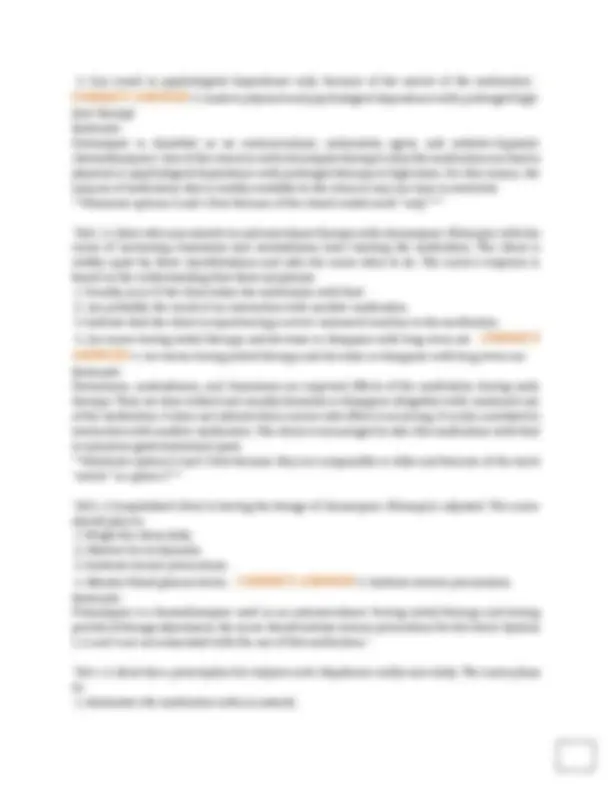
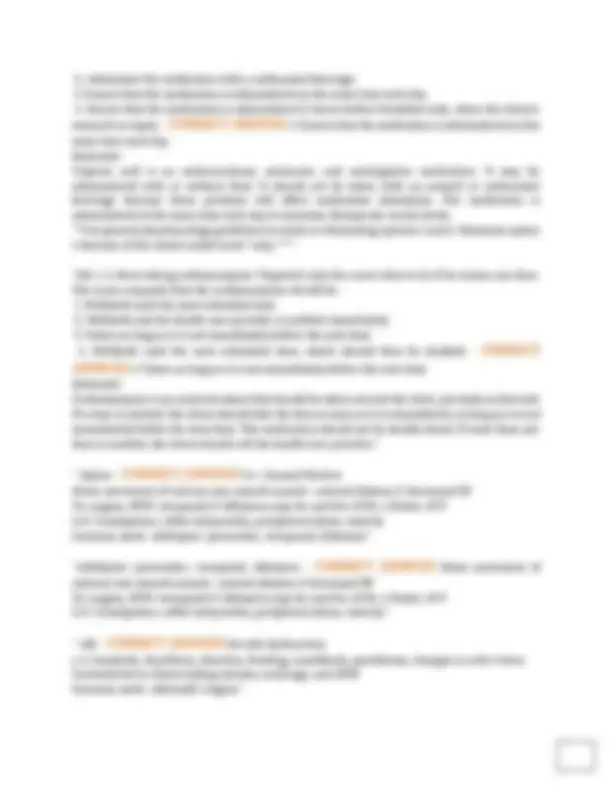
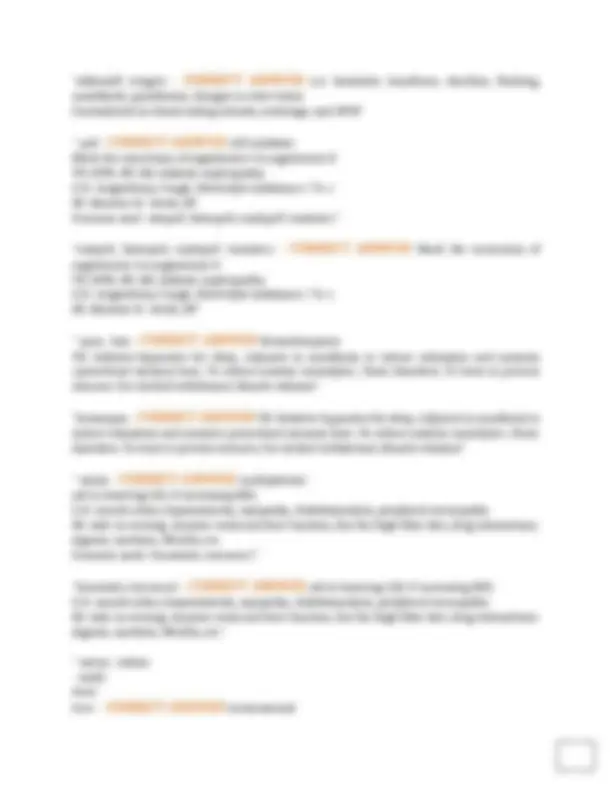
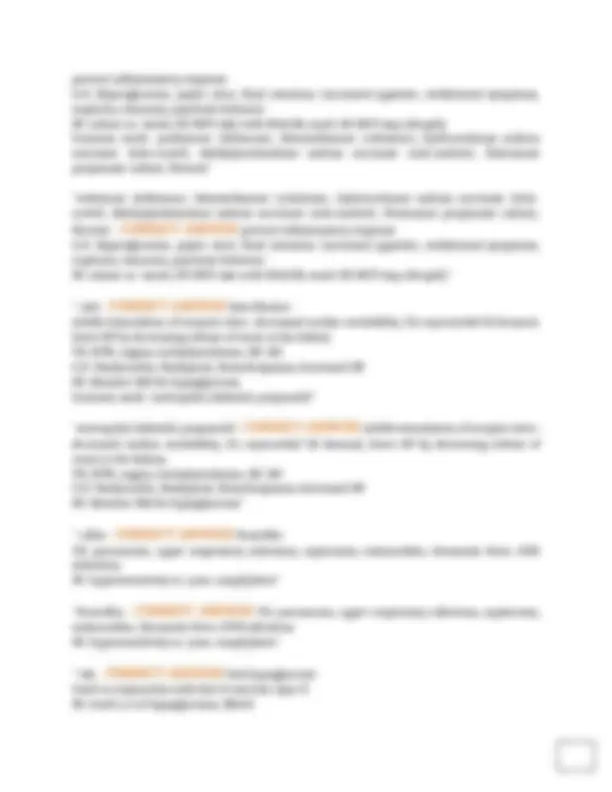
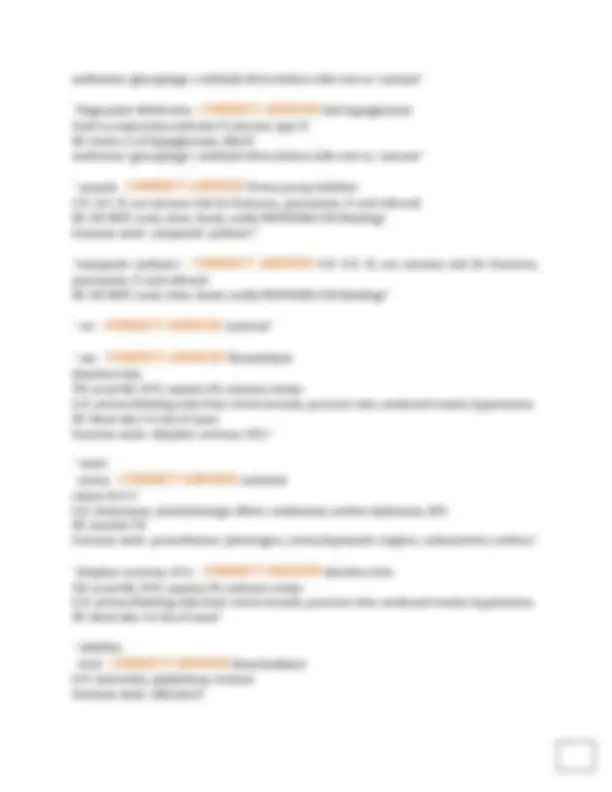
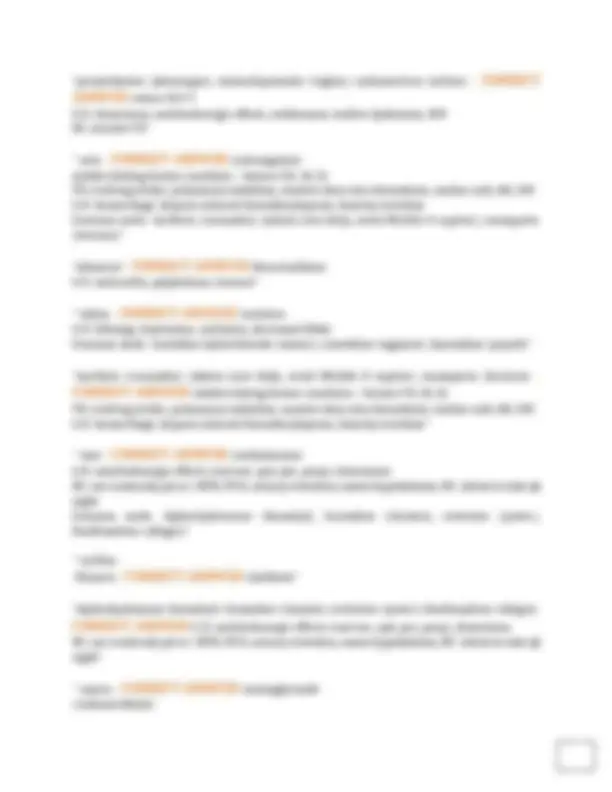
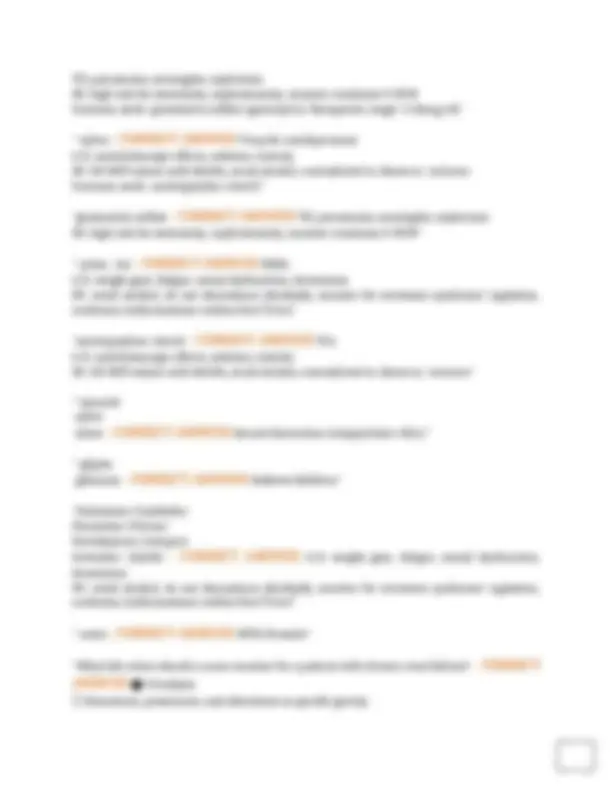
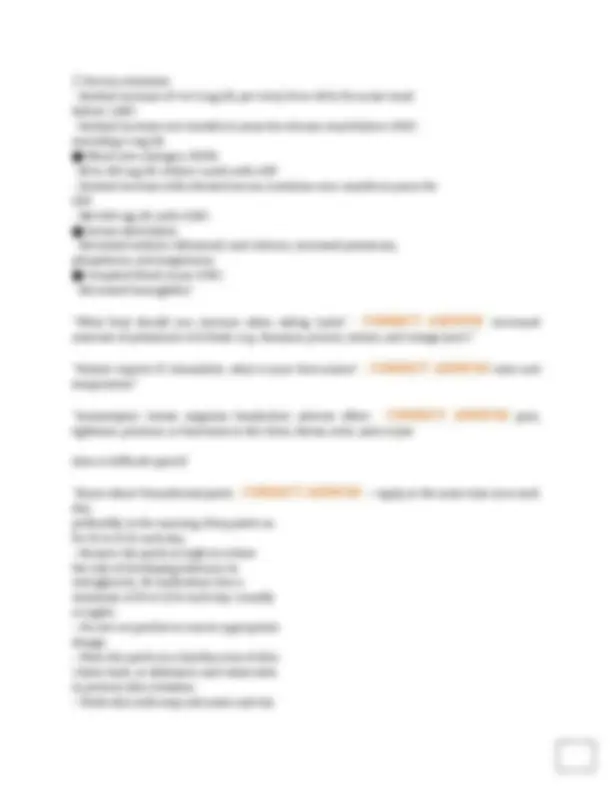
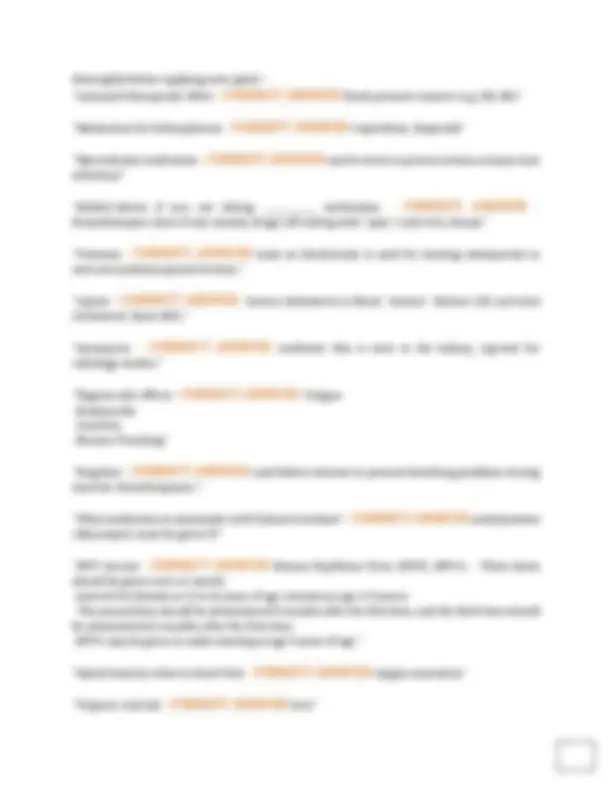
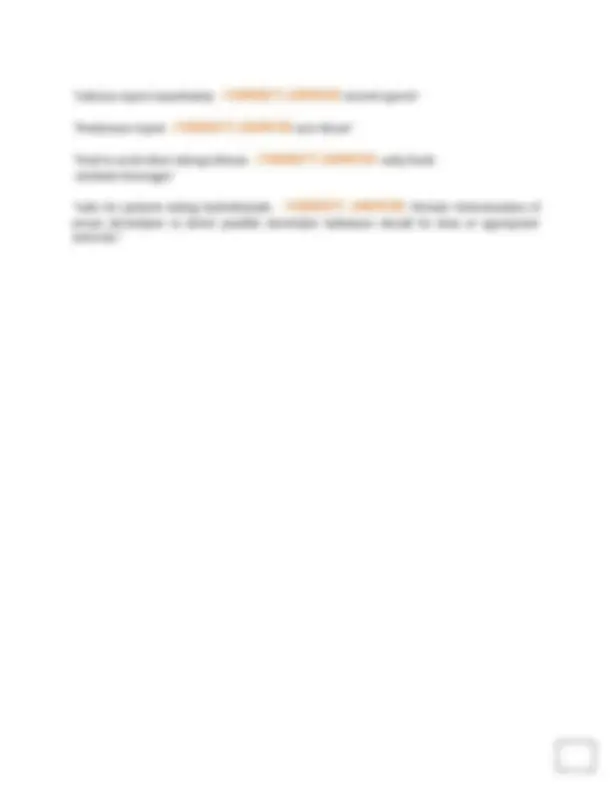


Study with the several resources on Docsity

Earn points by helping other students or get them with a premium plan


Prepare for your exams
Study with the several resources on Docsity

Earn points to download
Earn points by helping other students or get them with a premium plan
Community
Ask the community for help and clear up your study doubts
Discover the best universities in your country according to Docsity users
Free resources
Download our free guides on studying techniques, anxiety management strategies, and thesis advice from Docsity tutors
ATI PN PHARMACOLOGY PROCTORED NEWEST 2025 ACTUAL EXAM COMPLETE QUESTIONS AND CORRECT DETAILED ANSWERS (VERIFIED ANSWERS) ALREADY GRADED A+
Typology: Exams
1 / 90

This page cannot be seen from the preview
Don't miss anything!



















































































-home telephone number"
http://www.atitesting.com/ati_next_gen/FocusedReview/data/datacontext/RM%20AMS %20RN%208.0%20Chp%2044.pdf (prime with normal saline and infuse with sodium chloride)."
disease, they slow the process."
administered by subcutaneous injection or IV infusion" "1) A nurse is caring for a client with hyperparathyroidism and notes that the client's serum calcium level is 13 mg/dL. Which medication should the nurse prepare to administer as prescribed to the client?
Rationale: The normal serum calcium level is 8.6 to 10.0 mg/dL. This client is experiencing hypercalcemia. Calcium gluconate and calcium chloride are medications used for the treatment of tetany, which occurs as a result of acute hypocalcemia. In hypercalcemia, large doses of vitamin D need to be avoided. Calcitonin, a thyroid hormone, decreases the plasma calcium level by inhibiting bone resorption and lowering the serum calcium concentration." "2.) Oral iron supplements are prescribed for a 6-year-old child with iron deficiency anemia. The nurse instructs the mother to administer the iron with which best food item?
Rationale: Vitamin C increases the absorption of iron by the body. The mother should be instructed to administer the medication with a citrus fruit or a juice that is high in vitamin C. Milk may affect
absorption of the iron. Water will not assist in absorption. Orange juice contains a greater amount of vitamin C than apple juice." "3.) Salicylic acid is prescribed for a client with a diagnosis of psoriasis. The nurse monitors the client, knowing that which of the following would indicate the presence of systemic toxicity from this medication?
Rationale: Salicylic acid is absorbed readily through the skin, and systemic toxicity (salicylism) can result. Symptoms include tinnitus, dizziness, hyperpnea, and psychological disturbances. Constipation and diarrhea are not associated with salicylism." "4.) The camp nurse asks the children preparing to swim in the lake if they have applied sunscreen. The nurse reminds the children that chemical sunscreens are most effective when applied:
before exposure to the sun Rationale: Sunscreens are most effective when applied at least 30 minutes before exposure to the sun so that they can penetrate the skin. All sunscreens should be reapplied after swimming or sweating." "5.) Mafenide acetate (Sulfamylon) is prescribed for the client with a burn injury. When applying the medication, the client complains of local discomfort and burning. Which of the following is the most appropriate nursing action?
the client that this is normal Rationale: Mafenide acetate is bacteriostatic for gram-negative and gram-positive organisms and is used to treat burns to reduce bacteria present in avascular tissues. The client should be informed that the medication will cause local discomfort and burning and that this is a normal reaction; therefore options 1, 2, and 4 are incorrect"
Rationale: Topical corticosteroids can be absorbed into the systemic circulation. Absorption is higher from regions where the skin is especially permeable (scalp, axilla, face, eyelids, neck, perineum, genitalia), and lower from regions in which permeability is poor (back, palms, soles)." "10.) A nurse is planning to administer hydrochlorothiazide (HydroDIURIL) to a client. The nurse understands that which of the following are concerns related to the administration of this medication?
hyperglycemia, sulfa allergy Rationale: Thiazide diuretics such as hydrochlorothiazide are sulfa-based medications, and a client with a sulfa allergy is at risk for an allergic reaction. Also, clients are at risk for hypokalemia, hyperglycemia, hypercalcemia, hyperlipidemia, and hyperuricemia." "11.) A home health care nurse is visiting a client with elevated triglyceride levels and a serum cholesterol level of 398 mg/dL. The client is taking cholestyramine (Questran). Which of the following statements, if made by the client, indicates the need for further education?
continue my nicotinic acid from the health food store." Rationale: Nicotinic acid, even an over-the-counter form, should be avoided because it may lead to liver abnormalities. All lipid-lowering medications also can cause liver abnormalities, so a combination of nicotinic acid and cholestyramine resin is to be avoided. Constipation and bloating are the two most common side effects. Walking and the reduction of fats in the diet are therapeutic measures to reduce cholesterol and triglyceride levels." "12.) A client is on nicotinic acid (niacin) for hyperlipidemia and the nurse provides instructions to the client about the medication. Which statement by the client would indicate an understanding of the instructions?
should decrease the flushing." Rationale: Flushing is a side effect of this medication. Aspirin or a nonsteroidal anti-inflammatory drug can be taken 30 minutes before taking the medication to decrease flushing. Alcohol consumption needs to be avoided because it will enhance this side effect. The medication should be taken with meals, this will decrease gastrointestinal upset. Taking the medication with meals has no effect on the flushing. Clay-colored stools are a sign of hepatic dysfunction and should be immediately reported to the health care provider (HCP)." "13.) A client with coronary artery disease complains of substernal chest pain. After checking the client's heart rate and blood pressure, a nurse administers nitroglycerin, 0.4 mg, sublingually. After 5 minutes, the client states, "My chest still hurts." Select the appropriate actions that the nurse should take. Select all that apply.
the registered nurse.
decrease in the warfarin sodium (Coumadin) dosage
should be taken after meals to reduce the possibility of gastrointestinal upset. A headache is an occasional side effect of the medication and does not warrant discontinuation of the medication." "18.) Bethanechol chloride (Urecholine) is prescribed for a client with urinary retention. Which disorder would be a contraindication to the administration of this medication?
Rationale: Bethanechol chloride (Urecholine) can be harmful to clients with urinary tract obstruction or weakness of the bladder wall. The medication has the ability to contract the bladder and thereby increase pressure within the urinary tract. Elevation of pressure within the urinary tract could rupture the bladder in clients with these conditions." "19.) A nurse who is administering bethanechol chloride (Urecholine) is monitoring for acute toxicity associated with the medication. The nurse checks the client for which sign of toxicity?
Rationale: Toxicity (overdose) produces manifestations of excessive muscarinic stimulation such as salivation, sweating, involuntary urination and defecation, bradycardia, and severe hypotension. Treatment includes supportive measures and the administration of atropine sulfate subcutaneously or intravenously." "20.) Oxybutynin chloride (Ditropan XL) is prescribed for a client with neurogenic bladder. Which sign would indicate a possible toxic effect related to this medication?
Rationale: Toxicity (overdosage) of this medication produces central nervous system excitation, such as nervousness, restlessness, hallucinations, and irritability. Other signs of toxicity include hypotension or hypertension, confusion, tachycardia, flushed or red face, and signs of respiratory depression. Drowsiness is a frequent side effect of the medication but does not indicate overdosage."
"21.) A nurse is assisting with caring for a client with cancer who is receiving cisplatin. Select the adverse effects that the nurse monitors for that are associated with this medication. Select all that apply.
tetany. Rationale: Hypocalcemia can develop after thyroidectomy if the parathyroid glands are accidentally removed or injured during surgery. Manifestations develop 1 to 7 days after surgery. If the client develops numbness and tingling around the mouth, fingertips, or toes or muscle spasms or twitching, the health care provider is notified immediately. Calcium gluconate should be kept at the bedside." "23.) A client who has been newly diagnosed with diabetes mellitus has been stabilized with daily insulin injections. Which information should the nurse teach when carrying out plans for discharge?
Rotate the insulin injection sites systematically. Rationale:
When alcohol is combined with glimepiride (Amaryl), a disulfiram-like reaction may occur. This syndrome includes flushing, palpitations, and nausea. Alcohol can also potentiate the hypoglycemic effects of the medication. Clients need to be instructed to avoid alcohol consumption while taking this medication. The items in options 2, 3, and 4 do not need to be avoided." "27.) Sildenafil (Viagra) is prescribed to treat a client with erectile dysfunction. A nurse reviews the client's medical record and would question the prescription if which of the following is noted in the client's history?
Rationale: Sildenafil (Viagra) enhances the vasodilating effect of nitric oxide in the corpus cavernosum of the penis, thus sustaining an erection. Because of the effect of the medication, it is contraindicated with concurrent use of organic nitrates and nitroglycerin. Sildenafil is not contraindicated with the use of vitamins. Neuralgia and insomnia are side effects of the medication." "28.) The health care provider (HCP) prescribes exenatide (Byetta) for a client with type 1 diabetes mellitus who takes insulin. The nurse knows that which of the following is the appropriate intervention?
prescription for the client. Rationale: Exenatide (Byetta) is an incretin mimetic used for type 2 diabetes mellitus only. It is not recommended for clients taking insulin. Hence, the nurse should hold the medication and question the HCP regarding this prescription. Although options 1 and 3 are correct statements about the medication, in this situation the medication should not be administered. The medication is packaged in prefilled pens ready for injection without the need for drawing it up into another syringe." "29.) A client is taking Humulin NPH insulin daily every morning. The nurse reinforces instructions for the client and tells the client that the most likely time for a hypoglycemic reaction to occur is:
administration Rationale: Humulin NPH is an intermediate-acting insulin. The onset of action is 1.5 hours, it peaks in 4 to 12 hours, and its duration of action is 24 hours. Hypoglycemic reactions most likely occur during peak time." "30.) A client with diabetes mellitus visits a health care clinic. The client's diabetes mellitus previously had been well controlled with glyburide (DiaBeta) daily, but recently the fasting blood glucose level has been 180 to 200 mg/dL. Which medication, if added to the client's regimen, may have contributed to the hyperglycemia?
Rationale: Prednisone may decrease the effect of oral hypoglycemics, insulin, diuretics, and potassium supplements. Option 2, a monoamine oxidase inhibitor, and option 3, a β-blocker, have their own intrinsic hypoglycemic activity. Option 4 decreases urinary excretion of sulfonylurea agents, causing increased levels of the oral agents, which can lead to hypoglycemia." "31.) A community health nurse visits a client at home. Prednisone 10 mg orally daily has been prescribed for the client and the nurse reinforces teaching for the client about the medication. Which statement, if made by the client, indicates that further teaching is necessary?
take aspirin or my antihistamine if I need it." Rationale: Aspirin and other over-the-counter medications should not be taken unless the client consults with the health care provider (HCP). The client needs to take the medication at the same time every day and should be instructed not to stop the medication. A slight weight gain as a result of an improved appetite is expected, but after the dosage is stabilized, a weight gain of 5 lb or more weekly should be reported to the HCP. Caffeine-containing foods and fluids need to be avoided because they may contribute to steroid-ulcer development." "32.) Desmopressin acetate (DDAVP) is prescribed for the treatment of diabetes insipidus. The nurse monitors the client after medication administration for which therapeutic response?
The principal manifestations of Crohn's disease are diarrhea and abdominal pain. Infliximab (Remicade) is an immunomodulator that reduces the degree of inflammation in the colon, thereby reducing the diarrhea. Options 1, 3, and 4 are unrelated to this medication." "35.) The client has a PRN prescription for loperamide hydrochloride (Imodium). The nurse understands that this medication is used for which condition?
diarrhea Rationale: Loperamide is an antidiarrheal agent. It is used to manage acute and also chronic diarrhea in conditions such as inflammatory bowel disease. Loperamide also can be used to reduce the volume of drainage from an ileostomy. It is not used for the conditions in options 1, 2, and 4." "36.) The client has a PRN prescription for ondansetron (Zofran). For which condition should this medication be administered to the postoperative client?
Rationale: Ondansetron is an antiemetic used to treat postoperative nausea and vomiting, as well as nausea and vomiting associated with chemotherapy. The other options are incorrect." "37.) The client has begun medication therapy with pancrelipase (Pancrease MT). The nurse evaluates that the medication is having the optimal intended benefit if which effect is observed?
Rationale: Pancrelipase (Pancrease MT) is a pancreatic enzyme used in clients with pancreatitis as a digestive aid. The medication should reduce the amount of fatty stools (steatorrhea). Another intended effect could be improved nutritional status. It is not used to treat abdominal pain or heartburn. Its use could result in weight gain but should not result in weight loss if it is aiding in digestion." "38.) An older client recently has been taking cimetidine (Tagamet). The nurse monitors the client for which most frequent central nervous system side effect of this medication?
Rationale: Cimetidine is a histamine 2 (H2)-receptor antagonist. Older clients are especially susceptible to central nervous system side effects of cimetidine. The most frequent of these is confusion. Less common central nervous system side effects include headache, dizziness, drowsiness, and hallucinations." "39.) The client with a gastric ulcer has a prescription for sucralfate (Carafate), 1 g by mouth four times daily. The nurse schedules the medication for which times?
at bedtime Rationale: Sucralfate is a gastric protectant. The medication should be scheduled for administration 1 hour before meals and at bedtime. The medication is timed to allow it to form a protective coating over the ulcer before food intake stimulates gastric acid production and mechanical irritation. The other options are incorrect." "40.) The client who chronically uses nonsteroidal anti-inflammatory drugs has been taking misoprostol (Cytotec). The nurse determines that the medication is having the intended therapeutic effect if which of the following is noted?
Rationale: The client who chronically uses nonsteroidal anti-inflammatory drugs (NSAIDs) is prone to gastric mucosal injury. Misoprostol is a gastric protectant and is given specifically to prevent this occurrence. Diarrhea can be a side effect of the medication, but is not an intended effect. Options 3 and 4 are incorrect." "41.) The client has been taking omeprazole (Prilosec) for 4 weeks. The ambulatory care nurse evaluates that the client is receiving optimal intended effect of the medication if the client reports the absence of which symptom?
Rationale:
Rationale: Acetylcysteine can be given orally or by nasogastric tube to treat acetaminophen overdose, or it may be given by inhalation for use as a mucolytic. The nurse administering this medication as a mucolytic should have suction equipment available in case the client cannot manage to clear the increased volume of liquefied secretions." "45.) A client has a prescription to take guaifenesin (Humibid) every 4 hours, as needed. The nurse determines that the client understands the most effective use of this medication if the client states that he or she will:
Take the tablet with a full glass of water. Rationale: Guaifenesin is an expectorant. It should be taken with a full glass of water to decrease viscosity of secretions. Sustained-release preparations should not be broken open, crushed, or chewed. The medication may occasionally cause dizziness, headache, or drowsiness as side effects. The client should contact the health care provider if the cough lasts longer than 1 week or is accompanied by fever, rash, sore throat, or persistent headache." "46.) A postoperative client has received a dose of naloxone hydrochloride for respiratory depression shortly after transfer to the nursing unit from the postanesthesia care unit. After administration of the medication, the nurse checks the client for:
Rationale: Naloxone hydrochloride is an antidote to opioids and may also be given to the postoperative client to treat respiratory depression. When given to the postoperative client for respiratory depression, it may also reverse the effects of analgesics. Therefore, the nurse must check the client for a sudden increase in the level of pain experienced. Options 1, 2, and 4 are not associated with this medication." "47.) A client has been taking isoniazid (INH) for 2 months. The client complains to a nurse about numbness, paresthesias, and tingling in the extremities. The nurse interprets that the client is experiencing:
Rationale: A common side effect of the TB drug INH is peripheral neuritis. This is manifested by numbness, tingling, and paresthesias in the extremities. This side effect can be minimized by pyridoxine (vitamin B6) intake. Options 1, 3, and 4 are incorrect." "48.) A client is to begin a 6-month course of therapy with isoniazid (INH). A nurse plans to teach the client to:
skin immediately. Rationale: INH is hepatotoxic, and therefore the client is taught to report signs and symptoms of hepatitis immediately (which include yellow skin and sclera). For the same reason, alcohol should be avoided during therapy. The client should avoid intake of Swiss cheese, fish such as tuna, and foods containing tyramine because they may cause a reaction characterized by redness and itching of the skin, flushing, sweating, tachycardia, headache, or lightheadedness. The client can avoid developing peripheral neuritis by increasing the intake of pyridoxine (vitamin B6) during the course of INH therapy for TB." "49.) A client has been started on long-term therapy with rifampin (Rifadin). A nurse teaches the client that the medication:
Rationale: Rifampin should be taken exactly as directed as part of TB therapy. Doses should not be doubled or skipped. The client should not stop therapy until directed to do so by a health care provider. The medication should be administered on an empty stomach unless it causes gastrointestinal upset, and then it may be taken with food. Antacids, if prescribed, should be taken at least 1 hour before the medication. Rifampin causes orange-red discoloration of body secretions and will permanently stain soft contact lenses." "50.) A nurse has given a client taking ethambutol (Myambutol) information about the medication. The nurse determines that the client understands the instructions if the client states that he or she will immediately report:
it is coated." Rationale: Ecotrin is an aspirin-containing product and should be avoided. Alcohol consumption should be avoided by a client taking warfarin sodium. Taking prescribed medication at the same time each day increases client compliance. The Medic-Alert bracelet provides health care personnel emergency information." "55.) A client who is receiving digoxin (Lanoxin) daily has a serum potassium level of 3.0 mEq/L and is complaining of anorexia. A health care provider prescribes a digoxin level to rule out digoxin toxicity. A nurse checks the results, knowing that which of the following is the therapeutic serum level (range) for digoxin?
Rationale:
Therapeutic levels for digoxin range from 0.5 to 2 ng/mL. Therefore, options 1, 3, and 4 are incorrect." "56.) Heparin sodium is prescribed for the client. The nurse expects that the health care provider will prescribe which of the following to monitor for a therapeutic effect of the medication?
thromboplastin time (aPTT) Rationale: The PT will assess for the therapeutic effect of warfarin sodium (Coumadin) and the aPTT will assess the therapeutic effect of heparin sodium. Heparin sodium doses are determined based on these laboratory results. The hemoglobin and hematocrit values assess red blood cell concentrations." "57.) A nurse is monitoring a client who is taking propranolol (Inderal LA). Which data collection finding would indicate a potential serious complication associated with propranolol?
expiratory wheezes Rationale: Audible expiratory wheezes may indicate a serious adverse reaction, bronchospasm. β-Blockers may induce this reaction, particularly in clients with chronic obstructive pulmonary disease or asthma. Normal decreases in blood pressure and heart rate are expected. Insomnia is a frequent mild side effect and should be monitored." "58.) Isosorbide mononitrate (Imdur) is prescribed for a client with angina pectoris. The client tells the nurse that the medication is causing a chronic headache. The nurse appropriately suggests that the client:
food. Rationale: Isosorbide mononitrate is an antianginal medication. Headache is a frequent side effect of isosorbide mononitrate and usually disappears during continued therapy. If a headache occurs during therapy, the client should be instructed to take the medication with food or meals. It is not